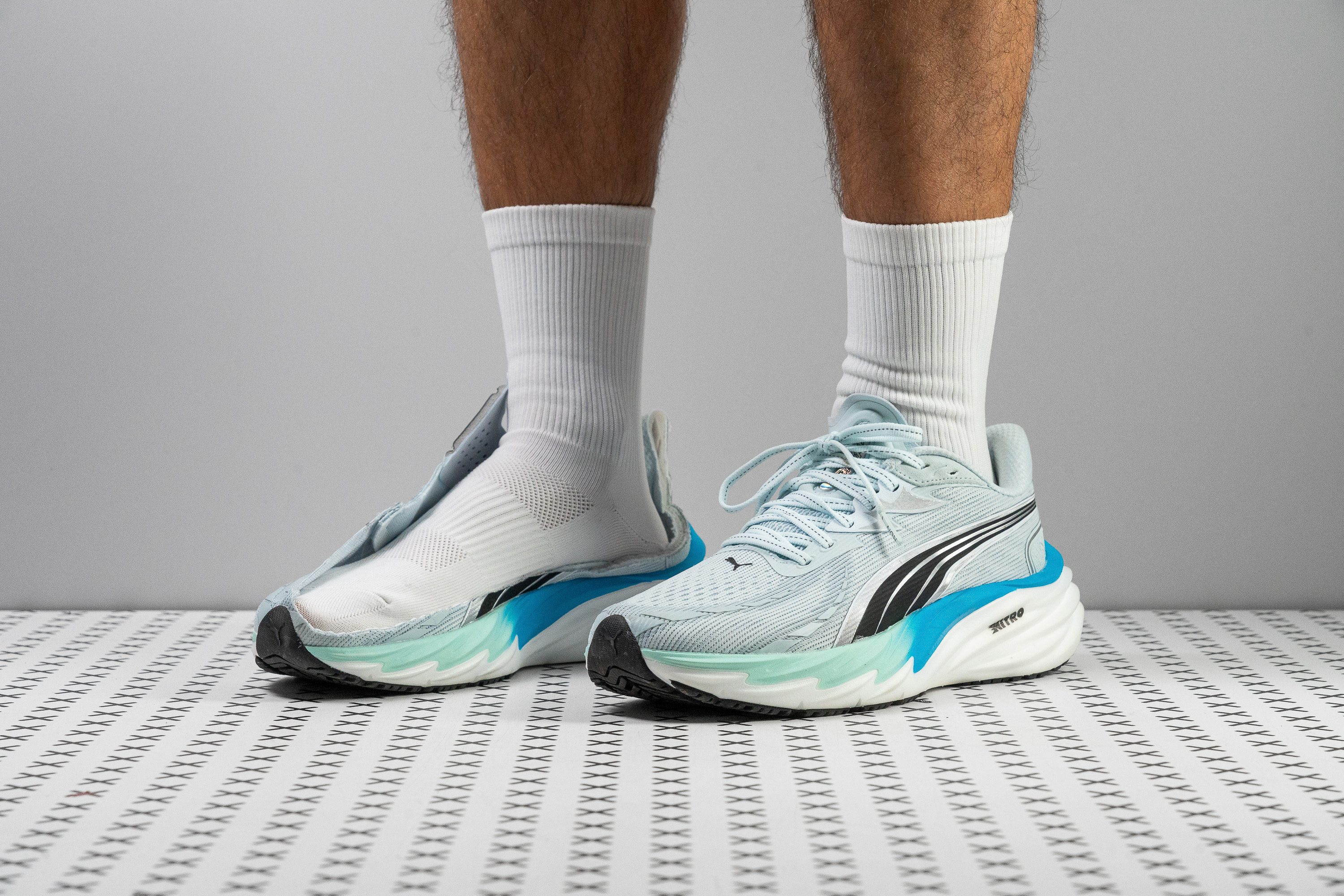Our verdict
- Top pick in best PUMA running shoes
- Top pick in best HYROX running shoes
Pros
- Impressive energy return
- Lightweight and agile underfoot
- Superior traction from PumaGrip outsole
- Handles tempo efforts with ease
- Flexible and comfortable for everyday use
- Accurate real drop
- Natural-feeling, non-rockered design
- Balanced cushioning with some ground feel
- Looks really cool
Cons
- Not ideal for long runs
- Fit leans toward the narrow side
- Midsole becomes firmer in cold conditions
- Slight price increase
Audience verdict
- Top 18% most popular running shoes
Comparison
The most similar running shoes compared
+ + Add a shoe | |||||
|---|---|---|---|---|---|
| Audience score | 85 Good! | 85 Good! | 79 Good! | 91 Superb! | |
| Price | $140 | $65 | $70 | $140 | |
| Pace | Daily runningTempo | Daily running | Daily running | Daily running | |
| Shock absorption | High | Moderate | - | Moderate | |
| Energy return | High | Low | - | High | |
| Traction | High | Low | - | Moderate | |
| Arch support | Neutral | Neutral | Neutral | Neutral | |
| Weight lab Weight brand | 7.9 oz / 224g 8.6 oz / 245g | 9.7 oz / 275g 10.7 oz / 303g | 9.3 oz / 264g 10 oz / 283g | 9.1 oz / 257g 9.4 oz / 266g | |
| Lightweight | ✓ | ✗ | ✗ | ✗ | |
| Drop lab Drop brand | 9.7 mm 10.0 mm | 9.4 mm 10.0 mm | 9.6 mm 8.0 mm | 9.5 mm 10.0 mm | |
| Strike pattern | HeelMid/forefoot | HeelMid/forefoot | HeelMid/forefoot | HeelMid/forefoot | |
| Size | True to size | True to size | Slightly small | True to size | |
| Midsole softness | Balanced | Balanced | Balanced | Balanced | |
| Difference in midsole softness in cold | Big | Small | Normal | Small | |
| Toebox durability | Decent | Bad | Decent | Decent | |
| Heel padding durability | Decent | Bad | Bad | Good | |
| Outsole durability | Decent | Decent | Decent | Decent | |
| Breathability | Moderate | Moderate | Moderate | Moderate | |
| Width / fit | Medium | Wide | Medium | Wide | |
| Toebox width | Medium | Medium | Wide | Wide | |
| Stiffness | Flexible | Moderate | Moderate | Flexible | |
| Torsional rigidity | Flexible | Flexible | Moderate | Moderate | |
| Heel counter stiffness | Moderate | Moderate | Moderate | Stiff | |
| Heel lab Heel brand | 33.7 mm 36.0 mm | 31.2 mm 33.0 mm | 30.8 mm 30.0 mm | 33.5 mm 33.0 mm | |
| Forefoot lab Forefoot brand | 24.0 mm 26.0 mm | 21.8 mm 23.0 mm | 21.2 mm 22.0 mm | 24.0 mm 23.0 mm | |
| Widths available | NormalWide | NormalWide | NormalX-Wide | NormalWide | |
| Orthotic friendly | ✓ | ✓ | ✓ | ✓ | |
| Season | All seasons | All seasons | All seasons | All seasons | |
| Removable insole | ✓ | ✓ | ✓ | ✓ | |
| Ranking | #197 Bottom 47% | #200 Bottom 46% | #326 Bottom 13% | #30 Top 8% | |
| Popularity | #64 Top 18% | #125 Top 34% | #286 Bottom 23% | #74 Top 20% |
Who should buy
The PUMA Velocity Nitro 4 is:
- Ideal for runners who want a classic daily trainer with strong energy return without paying premium prices.
- A sure bet for runners who need solid grip when running in wet conditions or on dirt roads.
- Perfect for short and medium-distance runs if you want one shoe for everything.
- A solid choice for those who dislike maximalist shoes and prefer a grounded, versatile stack height.
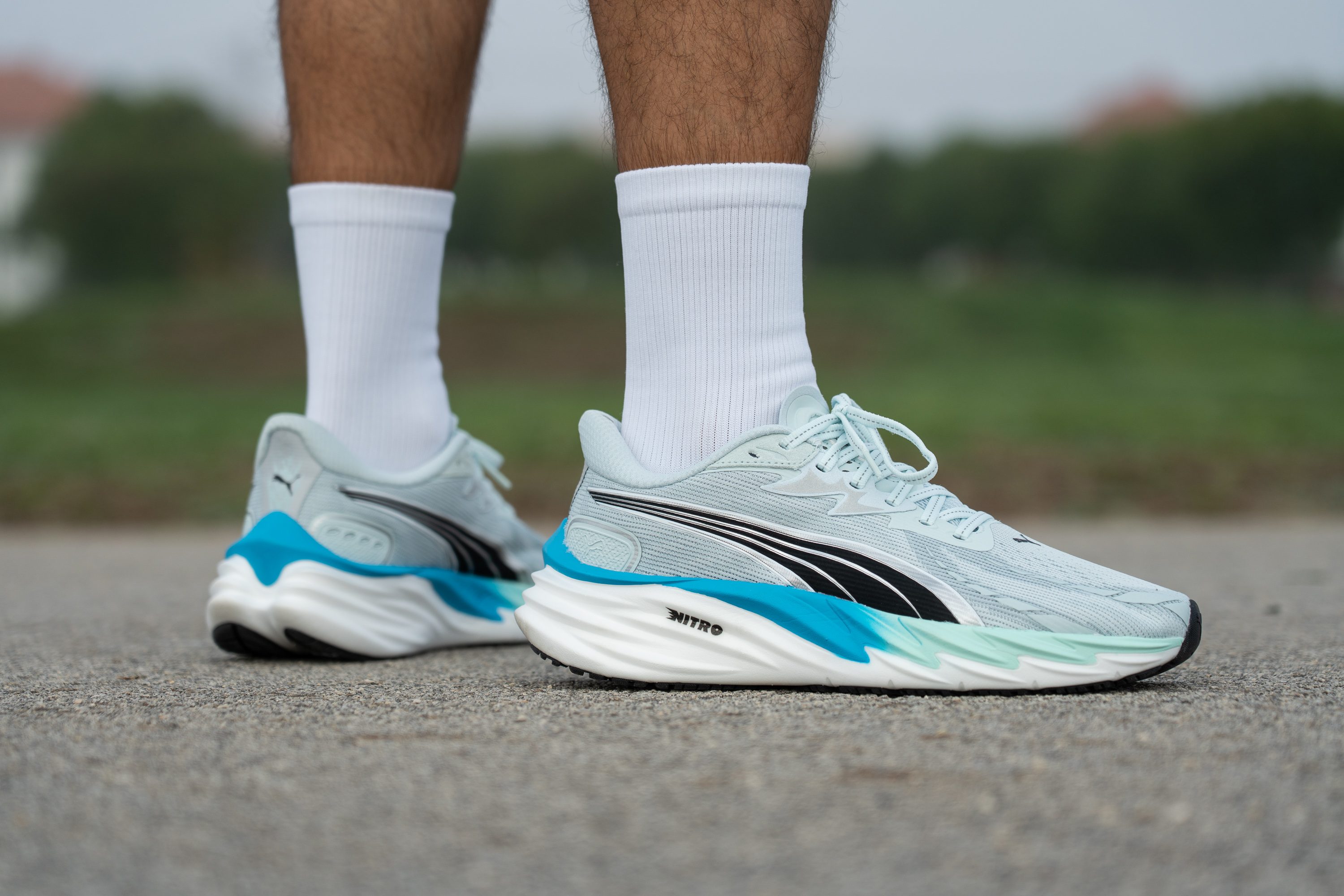
Who should NOT buy
In our view, the Velocity Nitro 4 is not the best option for runners who crave tons of foam underfoot or forefoot strikers needing strong shock absorption up front. After testing, we found the cushioning limited in these areas, so we suggest the PUMA MagMax Nitro or even the Nike Vomero 18 for a more cushion-focused alternative.
We also believe this shoe isn’t well-suited for those with stability concerns. Our assessment is that the neutral and compact platform provides little support, making the PUMA ForeverRun Nitro 2 or the Nike Structure 26 much better choices for daily runs.
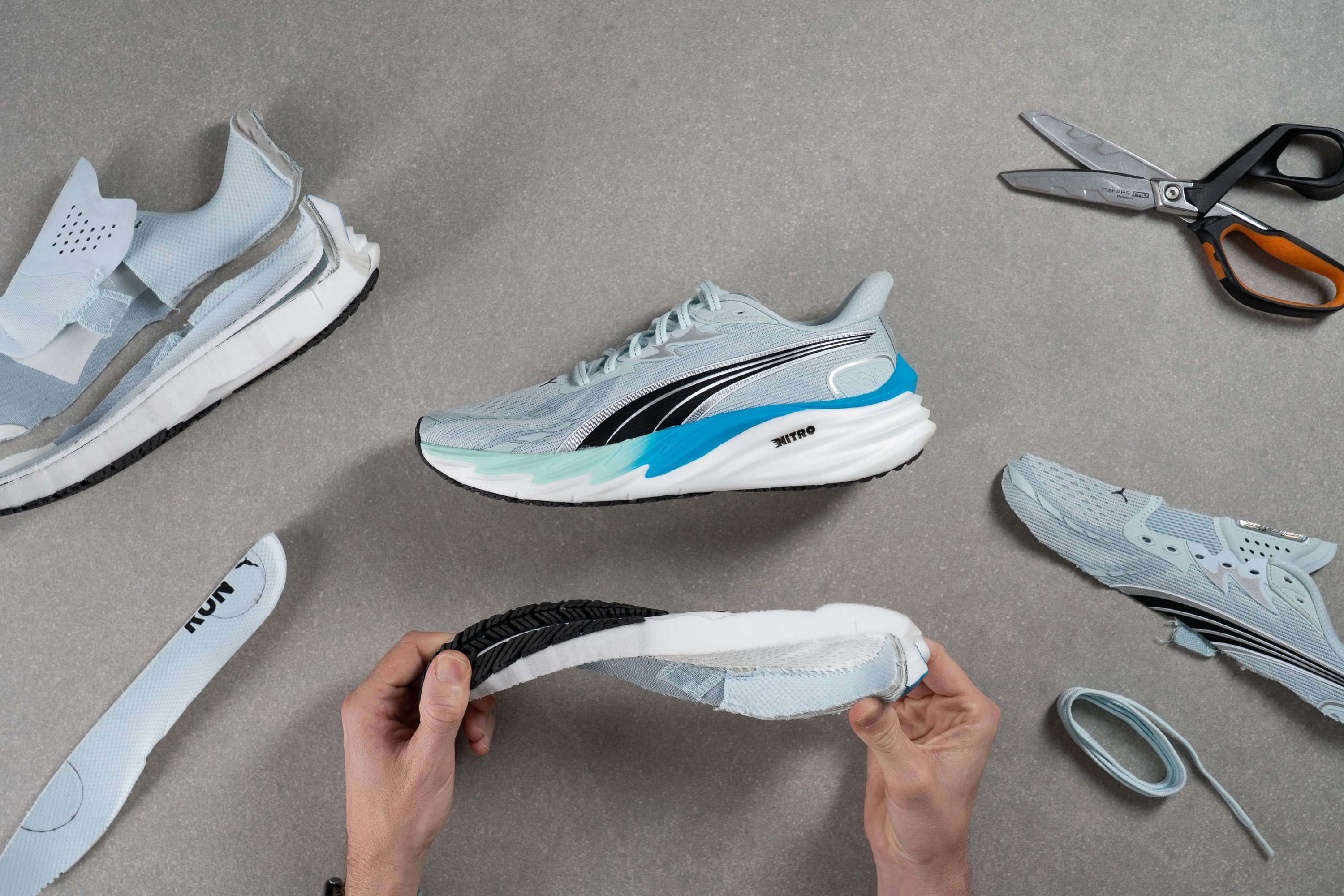
Cushioning
Shock absorption
We tested the Velocity Nitro 4 and found a small upgrade in shock absorption compared to the Velocity Nitro 3, reaching 136 SA in the heel and a near-average 100 SA in the forefoot.
These numbers fit the design of this daily trainer, which is not chasing the max-stack market but instead rivals shoes like the Pegasus 41, delivering a mix of impact protection with everyday-ready comfort.
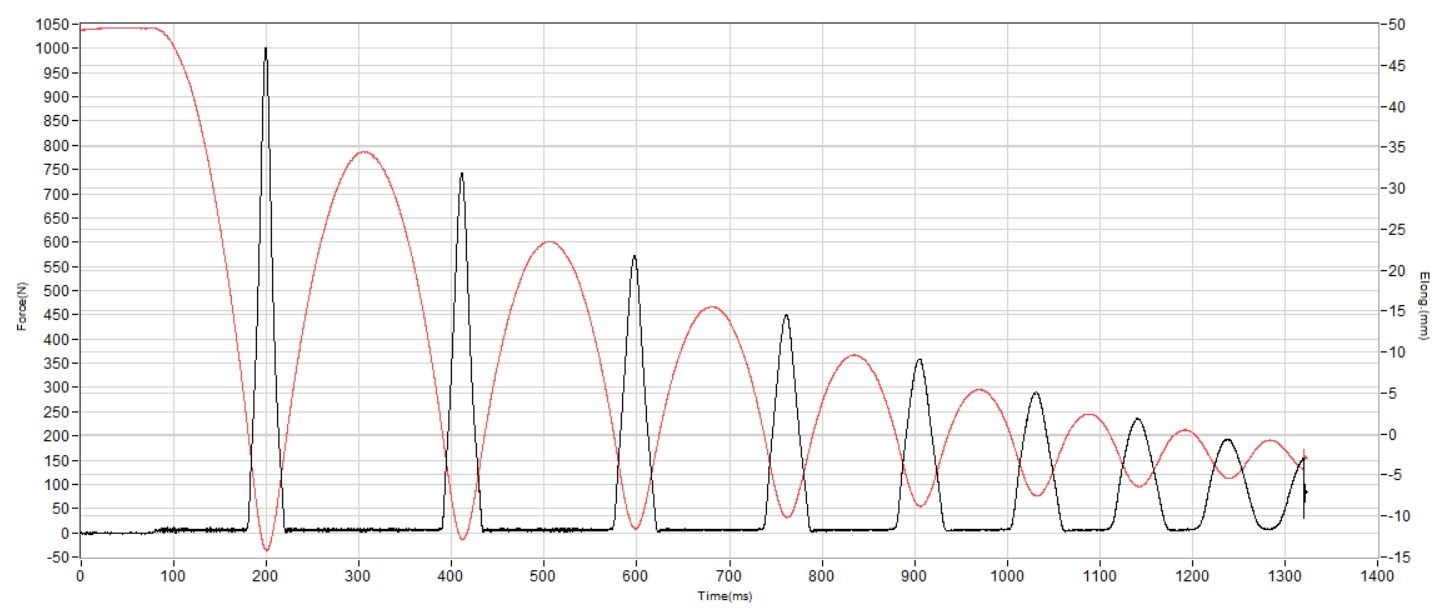
| Velocity Nitro 4 | 136 SA |
| Average | 129 SA |
Energy return
Last year, when we tested the energy return of the Velocity Nitro 3, we were slightly disappointed even though it stayed close to the lab’s average. But we really expected more from a foam marketed as Nitro by PUMA.
Luckily, they completely fixed that issue. If version 3 was a small letdown, version 4 turned into a bright surprise with stellar numbers: 67.5% of bounce in the heel and a superb 74.2% in the forefoot. To put the Velocity Nitro 4 into contexto, midfoot and forefoot strikers will experience more energy return than in the Adidas Adizero EVO SL!
| Velocity Nitro 4 | 67.5% |
| Average | 58.5% |
Heel stack
PUMA didn’t go overboard with the stack height, keeping it at a practical 33.7 mm in the heel. This design isn’t aimed specifically at long runs, but for short or medium-distance weekday sessions it delivers a reliable ride.
A lower stack height is also preferred by many for casual use, whether it’s walking the dog or heading to the gym, since not everything in life has to be about running!
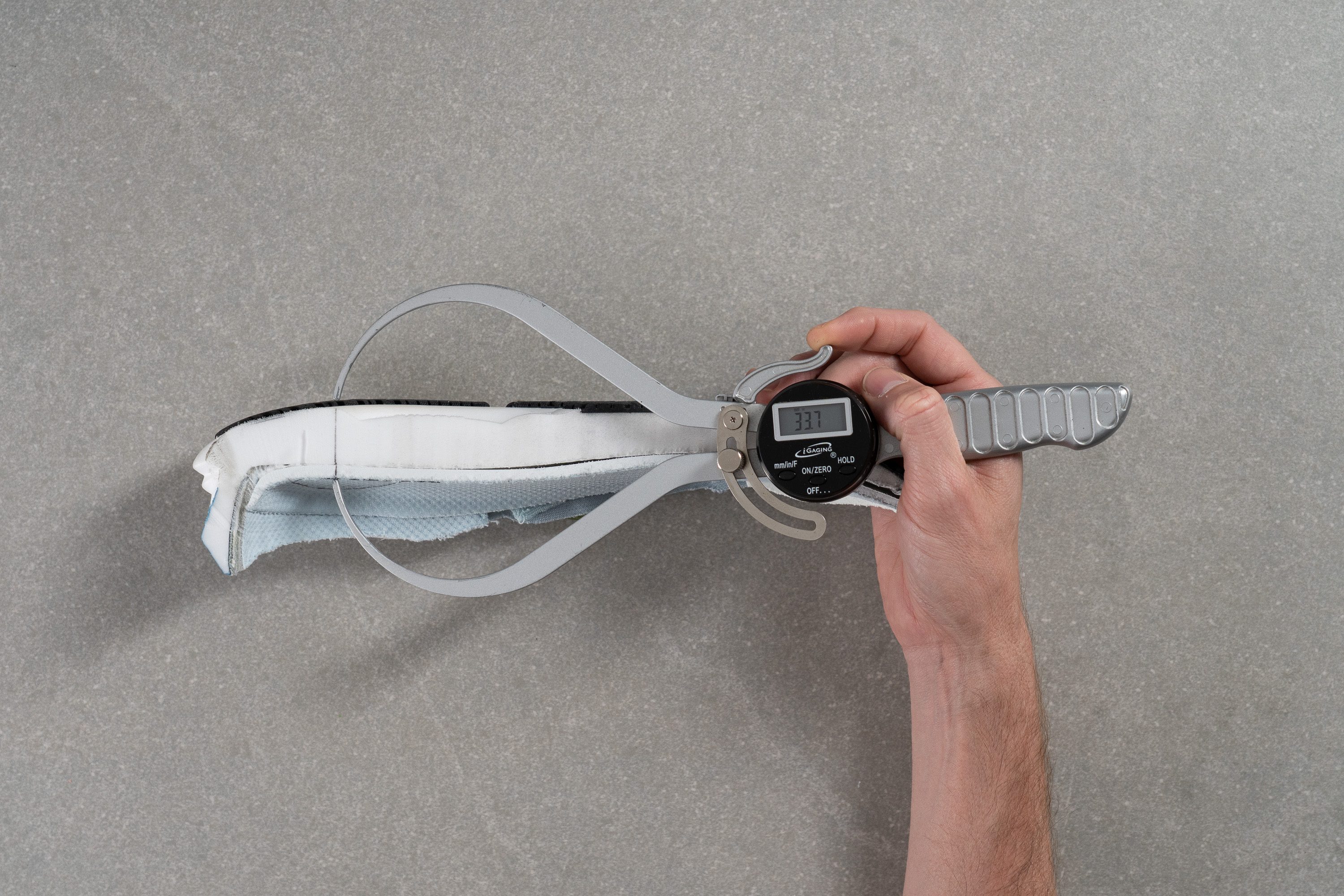
| Velocity Nitro 4 | 33.7 mm |
| Average | 34.8 mm |
Forefoot stack
Ground feel is something that’s fading in many running shoes, but not in the Velocity Nitro 4.
With only 24.0 mm in the forefoot, it delivers a feedback-rich ride where you can clearly sense the ground and push off with your toes. However, if you prefer cushion-rich shoes up front, this won’t be the right fit.
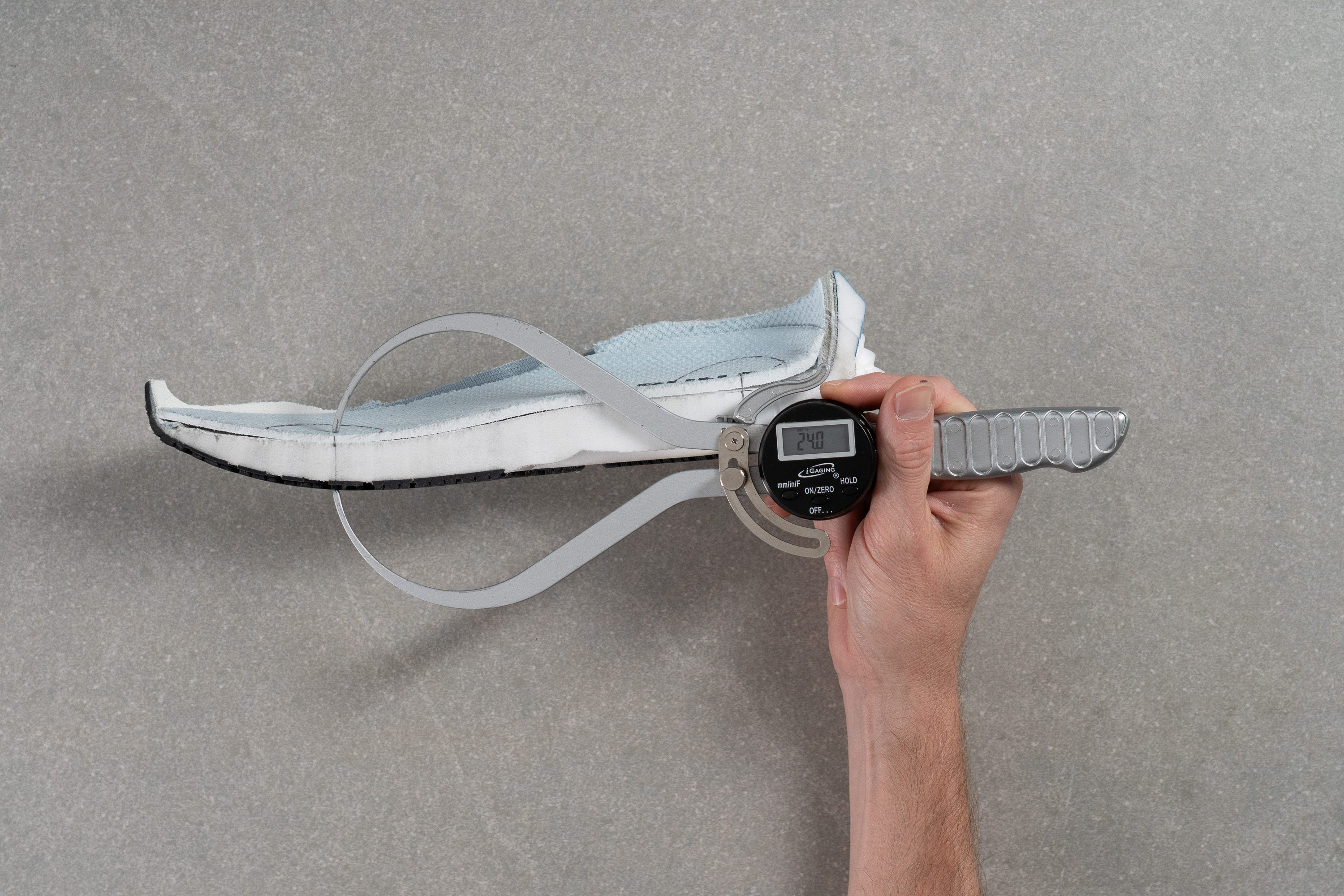
| Velocity Nitro 4 | 24.0 mm |
| Average | 26.2 mm |
Drop
PUMA lists a classic 10 mm drop in the official spec sheet, and we measured 9.7 mm—so congrats to them, as we often find bigger gaps.
In daily trainers, we've found that drops usually range from 8 to 10 mm to suit most runners while slightly favoring heel strikers, so this one comes as no surprise.
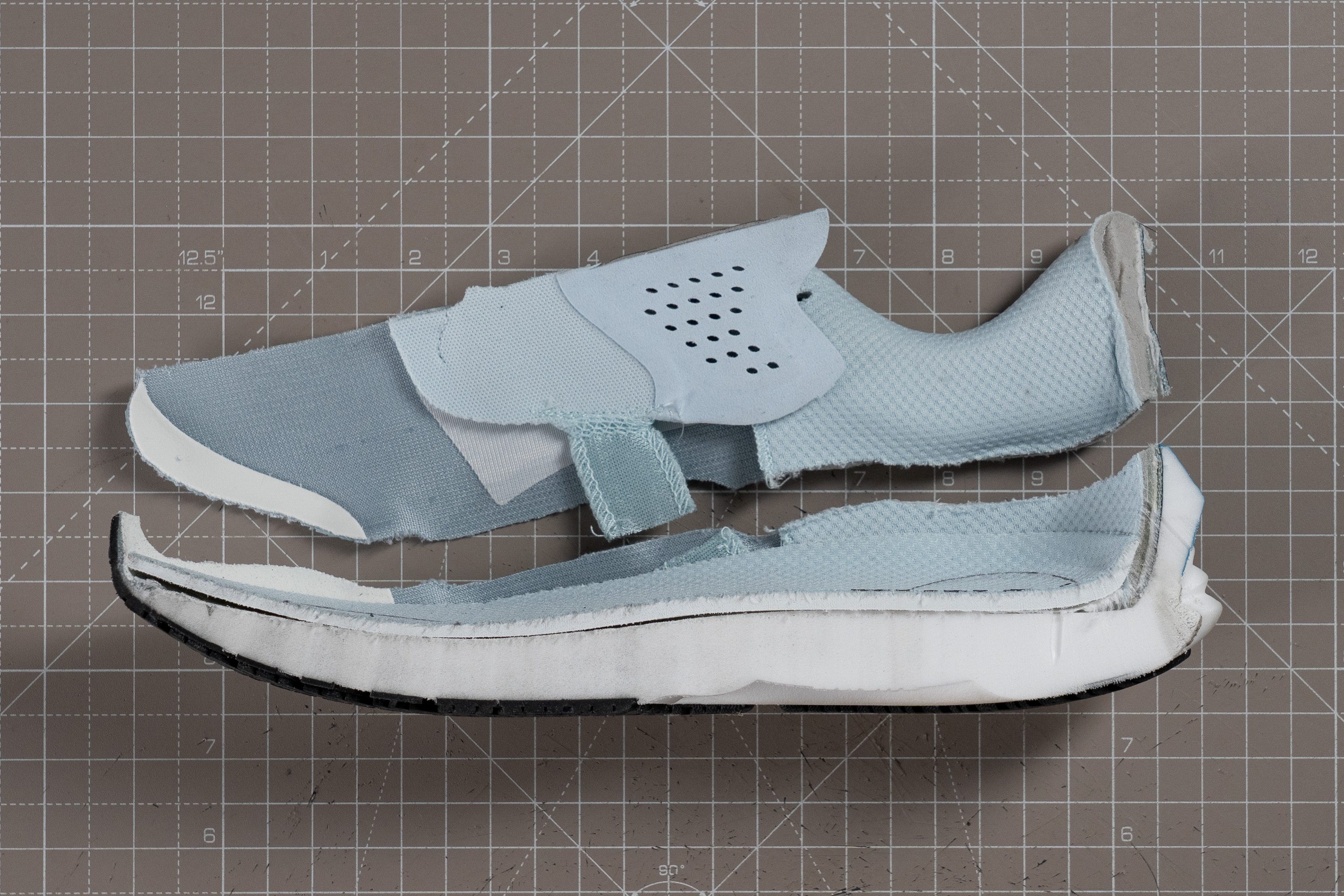
| Velocity Nitro 4 | 9.7 mm |
| Average | 8.6 mm |
Midsole softness
PUMA simplified the midsole of the Velocity Nitro 4, moving away from the dual-foam setup of the previous version, and we think this was a smart move since the old design felt too firm and low on bounce.
This time, we tested the new Nitro foam at 20.0 HA on our durometer, giving the shoe a balanced feel that matches its stack height, as a super-soft midsole would not pair well with this design.
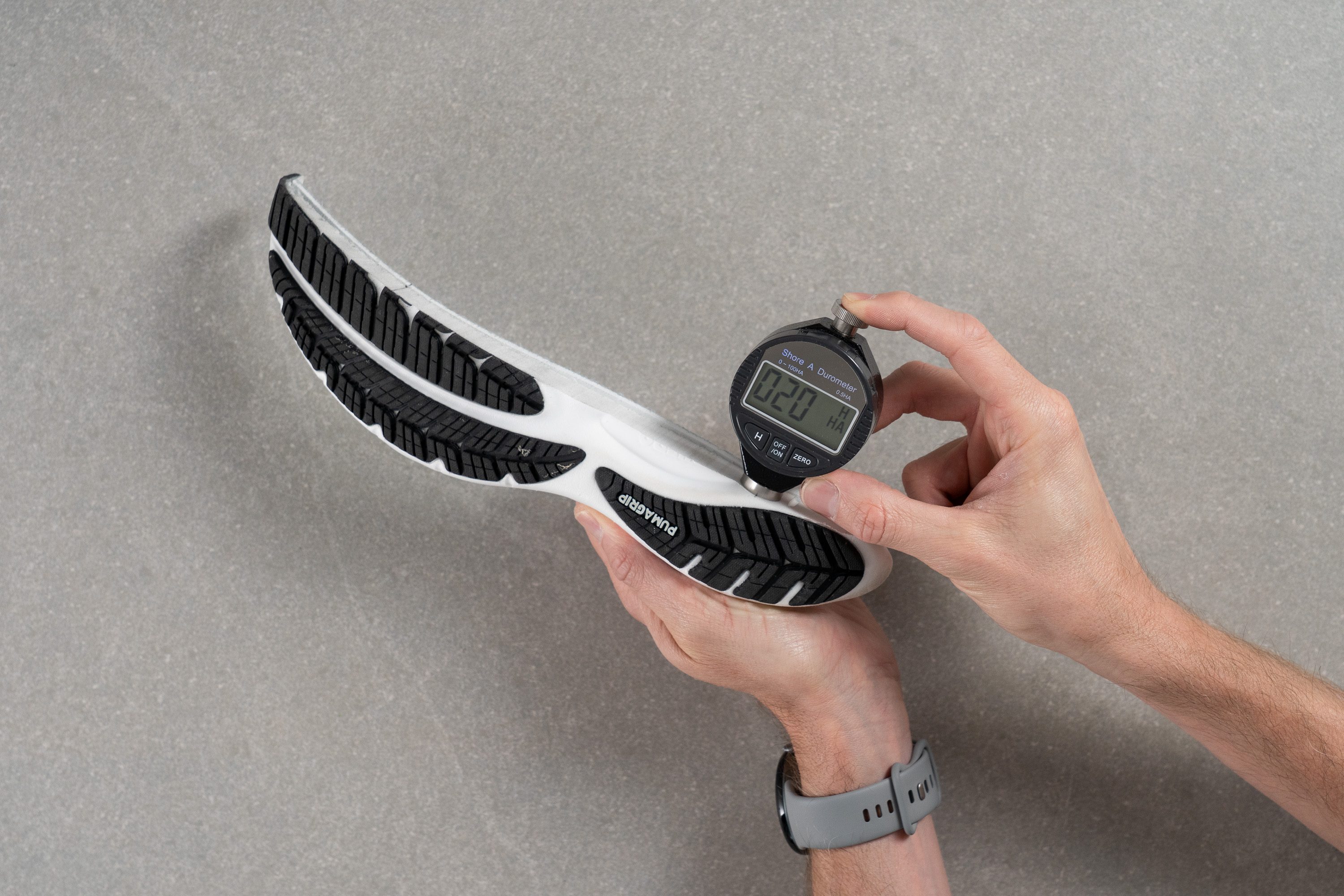
| Velocity Nitro 4 | 20.0 HA |
| Average | 20.4 HA |
Rocker
The Velocity Nitro 4 delivers a non-rockered platform, which we appreciate. Just like we said with the stack height, the market is also crowded with rockered shoes, so this design feels like a breath of fresh air.
It works well for a wide range of paces without pushing forward motion, a quality many runners prefer. It also works better for daily wear and encourages foot strength during runs by not providing extra assistance on every toe-off.
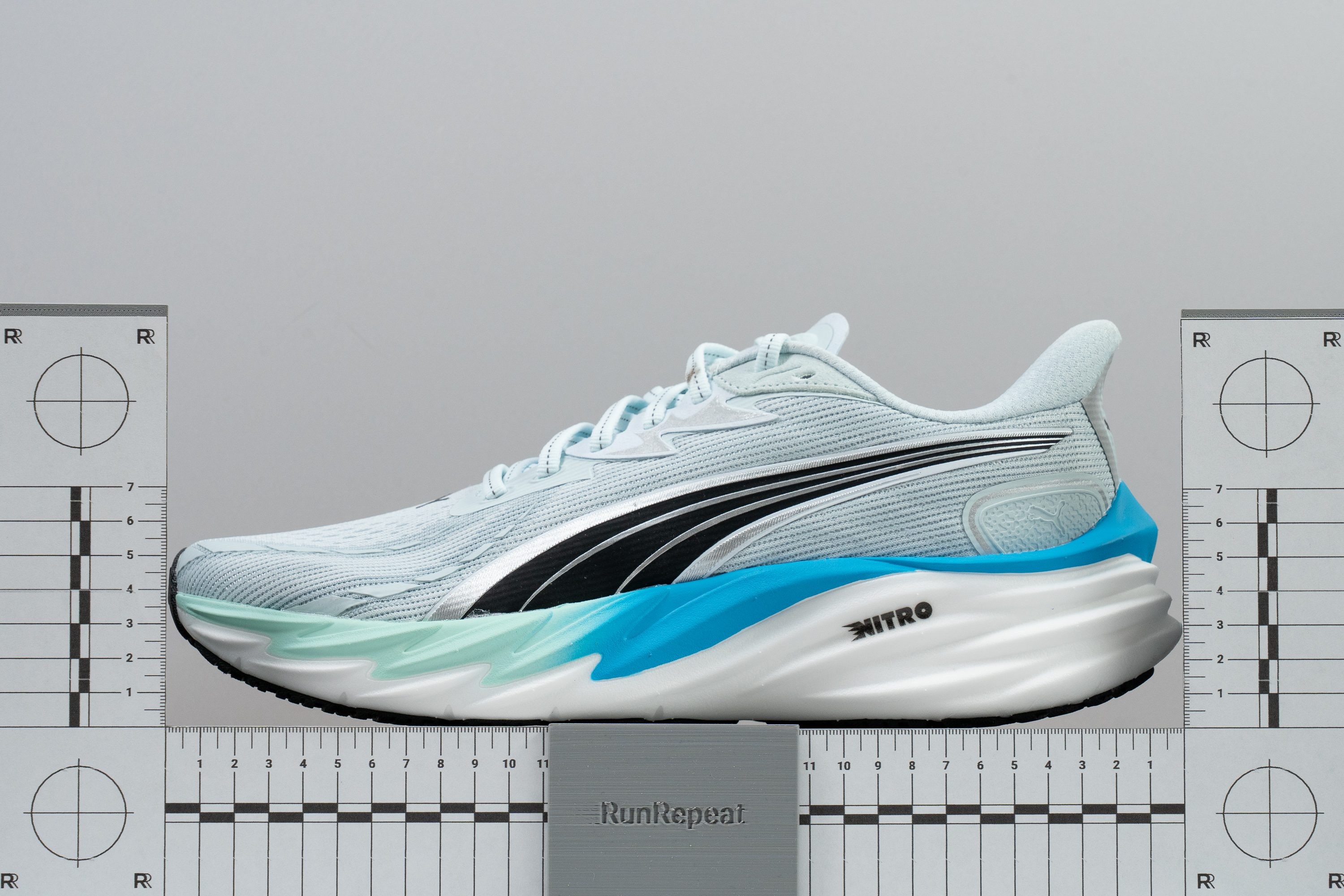
Size and fit
Size
PUMA Velocity Nitro 4 fits true to size (41 votes).
Width / Fit
The Velocity Nitro series has never been about a roomy fit, and version 4 keeps that same tight feel.
That was clear from the moment we tested it, but to confirm, we made our gel mold of the interior and discovered a measurement of 93.0 mm, which is definitely a snugger fit compared to the average.
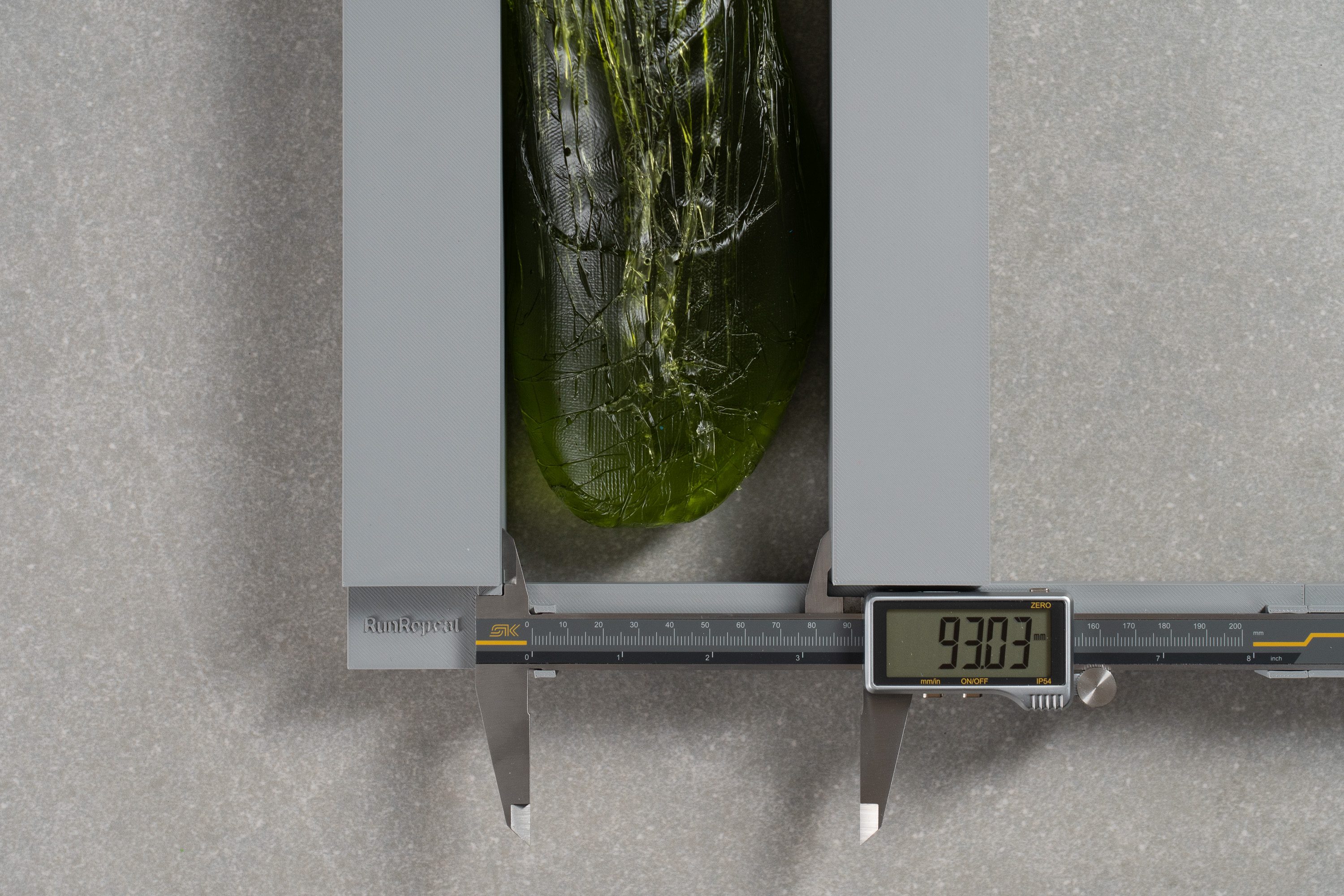
| Velocity Nitro 4 | 93.0 mm |
| Average | 95.1 mm |
Toebox width
The toebox of version 3 was excessively tapered, and we’re glad to report that version 4 offers a little more space at 71.6 mm. Still, it remains narrower than the lab average.
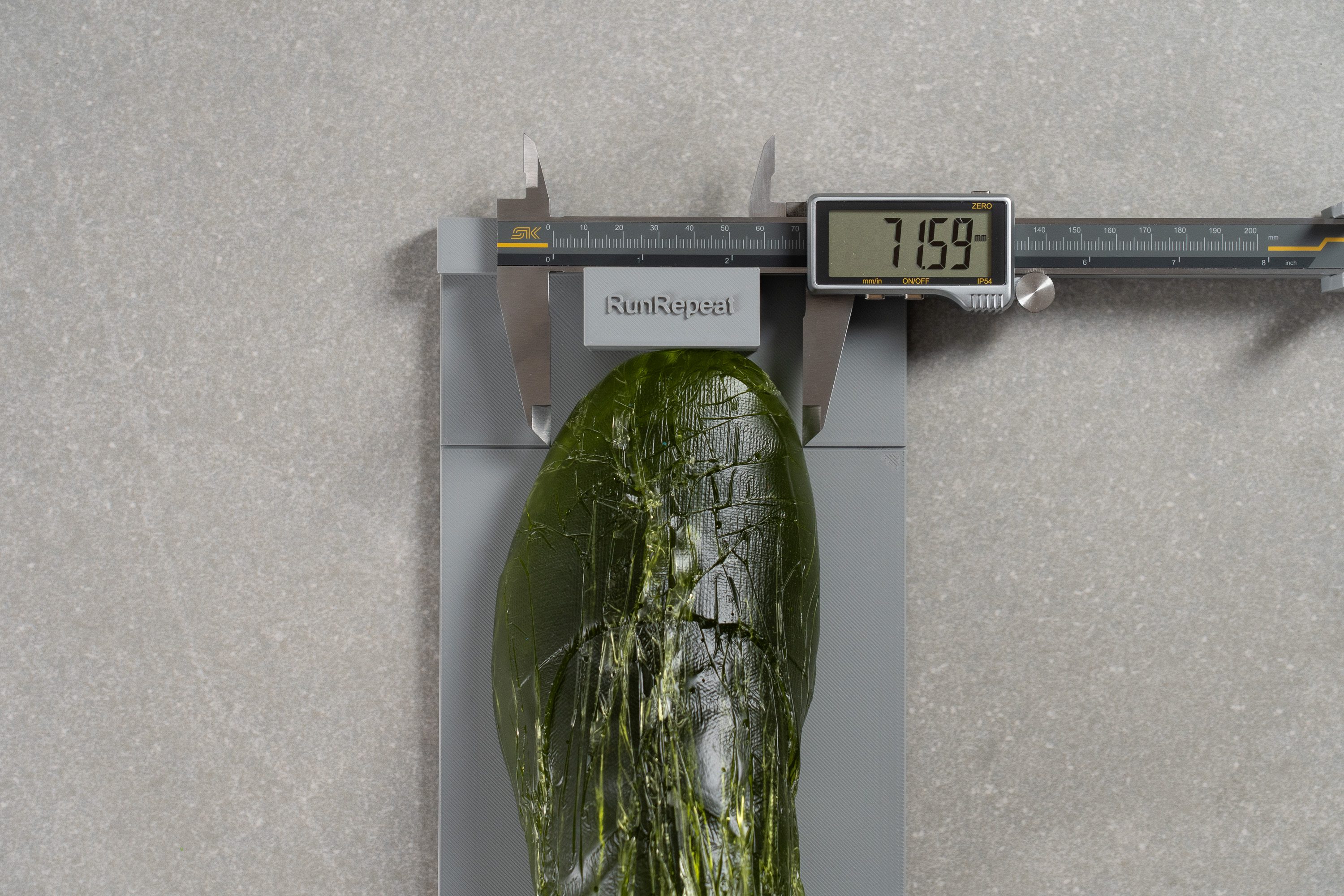
| Velocity Nitro 4 | 71.6 mm |
| Average | 73.2 mm |
Toebox height
The vertical clearance of the upper measures 25.9 mm, which is lower than most daily trainers.
This setup favors runners who dislike extra space and prefer a glove-like, tight fit that enhances security.
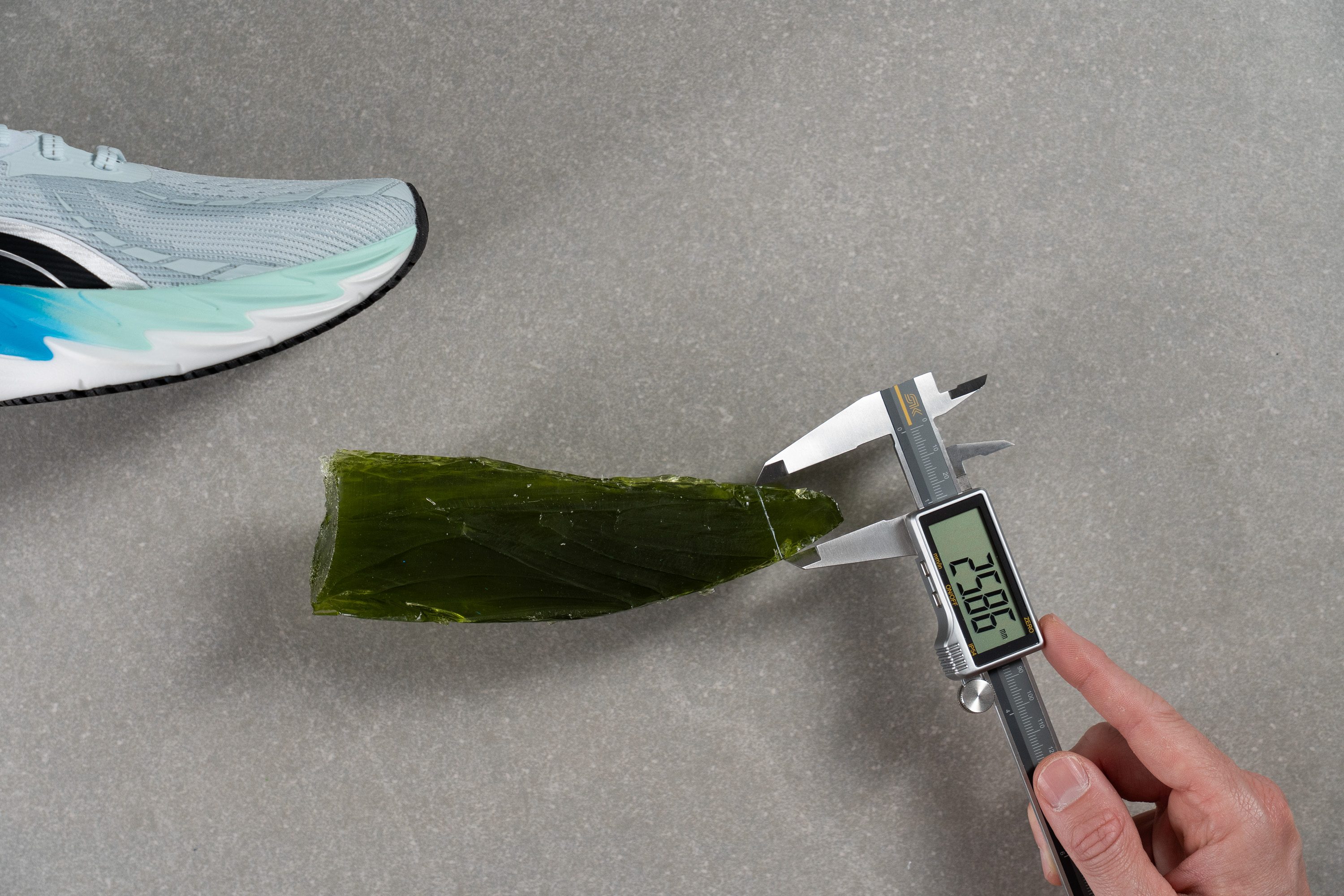
| Velocity Nitro 4 | 25.9 mm |
| Average | 27.1 mm |
Traction / Grip
Traction test
One of the biggest appeals of PUMA running shoes is the excellent PumaGrip rubber, a super-strong, grippy compound that few brands can match.
In the Velocity Nitro 4, we tested the outsole and discovered the grip was exactly as impressive as we expected. Scoring 0.65 on wet concrete, it proves to be a fantastic rubber that stands among the least slippery daily trainers available.
| Velocity Nitro 4 | 0.65 |
| Average | 0.48 |
Outsole design
The outsole of the Velocity Nitro 4 features deep grooves and a herringbone-inspired pattern that delivers multi-directional traction.
Coverage is strong in the forefoot, while midfoot cutouts and a larger heel opening reduce weight and enhance flexibility, creating smoother transitions and a more natural stride.
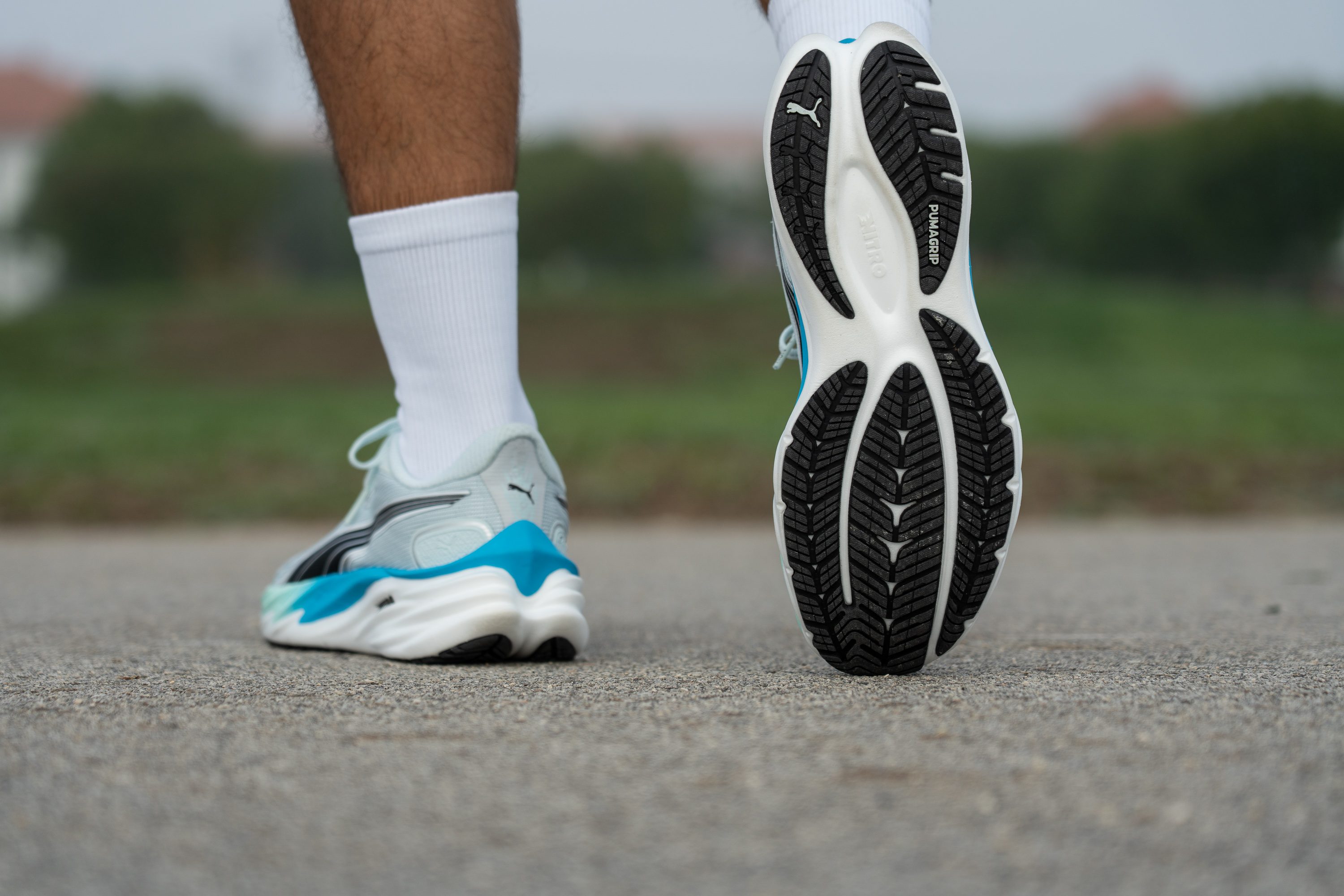
Flexibility / Stiffness
We already mentioned that this shoe works well for walking and casual everyday use, and with its low 8.9N result in the 30-degree bend test, it confirms that it’s also fantastic for easy jogs at slow paces.
And checks another box of the old-school running shoe design!
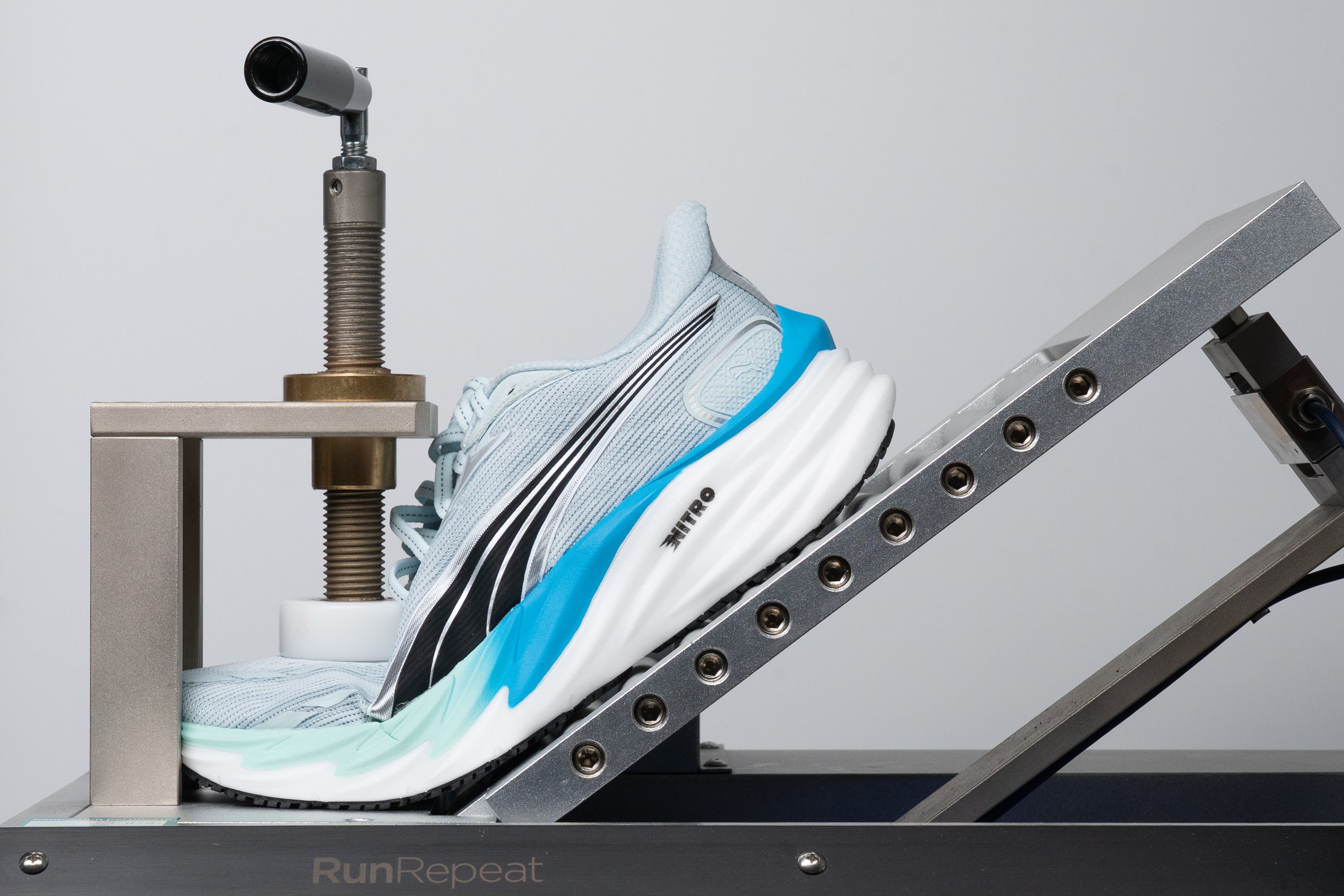
| Velocity Nitro 4 | 8.9N |
| Average | 15.3N |
Weight
Do you remember that we mentioned earlier how PUMA ditched the dual-foam setup for a single slab of Nitro foam? That change is the key not only for the improved energy return and smoother ride, but also for a dramatic weight drop from its predecessor.
Version 3 had a reasonable weight for a daily trainer at 9.3 oz (264g), but the difference here is striking. We tested the Velocity Nitro 4 at just 7.9 oz (224g) on our scale, a fantastic result that makes the shoe feel more agile and fun underfoot.
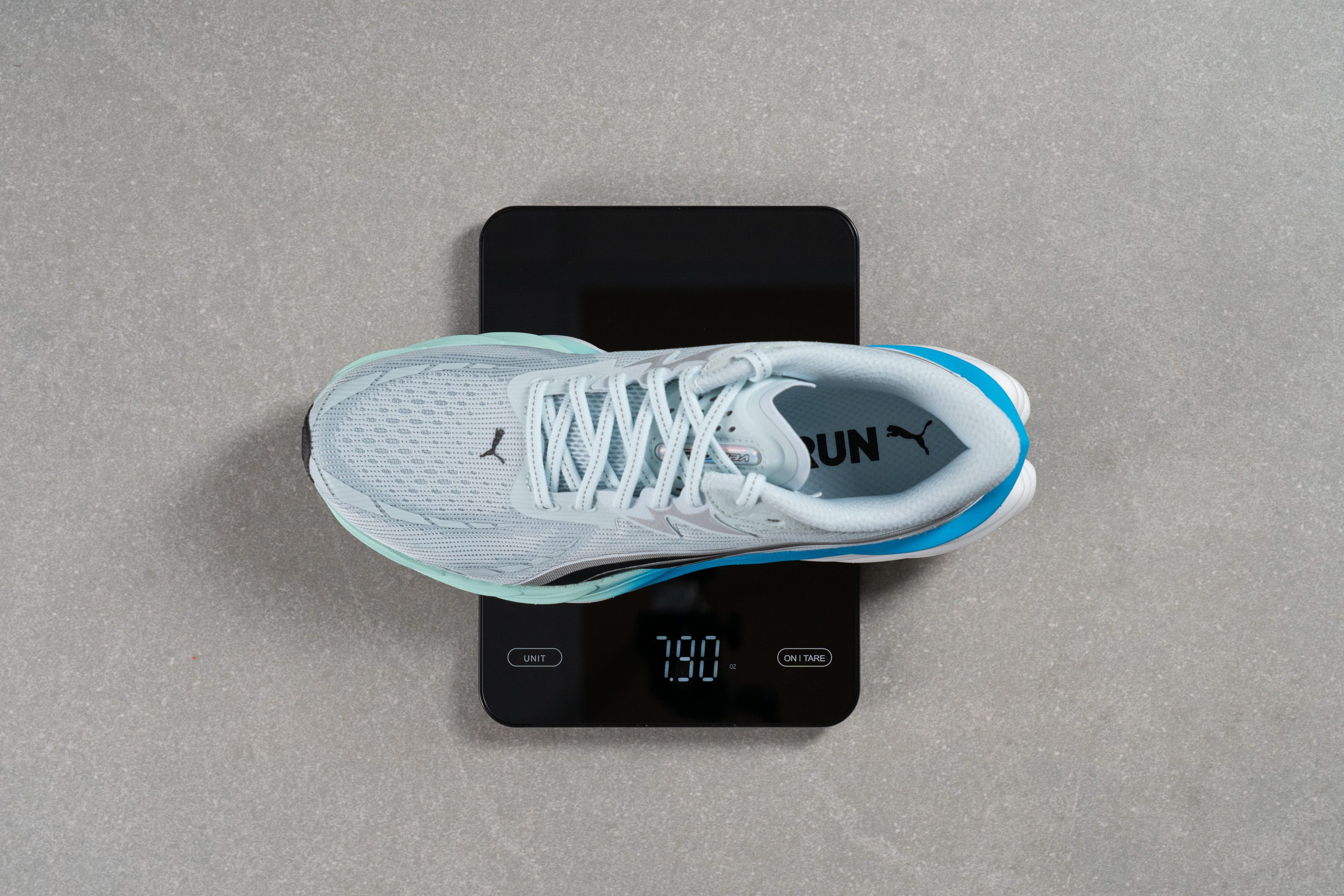
| Velocity Nitro 4 | 7.9 oz (224g) |
| Average | 9.3 oz (264g) |
Breathability
Up until now, everything was going very well with the PUMA Velocity Nitro 4, but breathability presented a small drawback for runners in hot climates. During our tests, we noticed that airflow was more limited than we had expected.
Ventilation performance scored only 3/5 in our smoke test, showing that the shoe struggles on very warm days. While not terrible, this limitation makes scorching summer runs less comfortable than we would like.
On the other hand, the reduced airflow can be an advantage in cold weather. The shoe feels noticeably cozier in winter, giving it a warmer edge compared to ultra-breathable peers.

The main reason, as we discovered, is the dual-layer mesh that PUMA introduced.
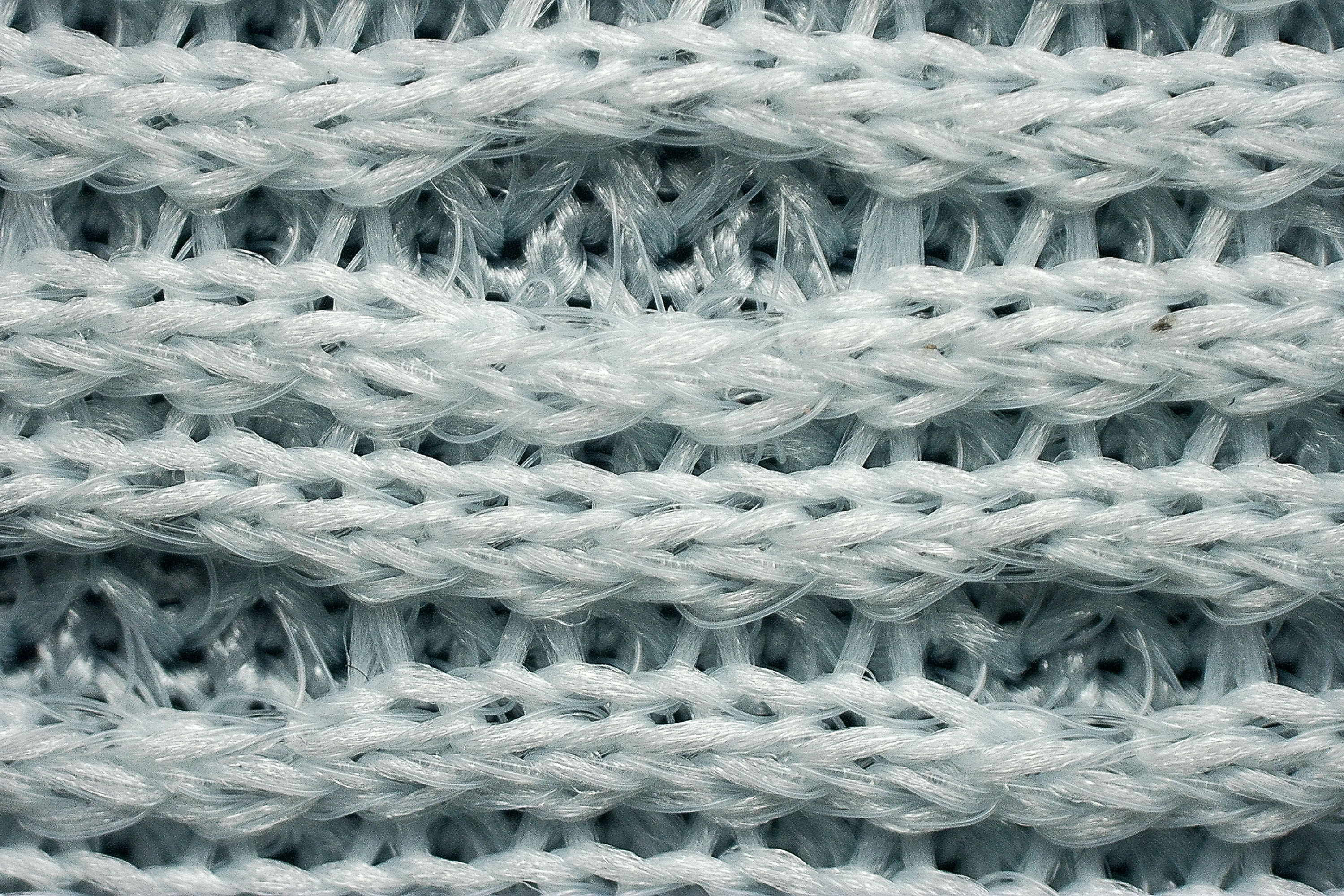
When observed under the microscope, the ventilation holes were clearly blocked by the lower layer, which explained the weaker performance.
Still, we wouldn’t call this upper a failure. It may not shine in summer, but it remains usable if the pace is easy, and the well-padded heel adds welcome comfort that balances the overall experience.
| Velocity Nitro 4 | 3 |
| Average | 3.7 |
Stability
Lateral stability test
The PUMA Velocity Nitro 4 is built for neutral runners, or at least that’s what we confirmed after testing it in the lab. It lacks the wide midsole seen in some modern daily trainers and doesn’t have a stiff structure either.
Instead, it focuses on other qualities, but this comes at the cost of a more natural ride where stability depends on the runner, not the shoe. Even with the light-blue raised heel and lateral TPU-based inserts to center the heel, we don't recommend it for pronators at all.
Torsional rigidity
Thanks to its moderate stack height and the outsole cutouts, the torsional rigidity of the VN4 remains low, even with the added millimeters of foam in the midsole. We tested it and rated it 2 out of 5.
| Velocity Nitro 4 | 2 |
| Average | 3.5 |
Heel counter stiffness
The heel counter scored 3/5, which is the most common result for daily running shoes. No surprises here, just a balanced design that offers a touch of support while keeping comfort as a priority.
| Velocity Nitro 4 | 3 |
| Average | 2.9 |
Midsole width - forefoot
The agility and fun factor of this shoe comes partly from its compact midsole, measuring only 109.1 mm in the forefoot. Naturally, this also contributes to the less stable sensation some runners may feel, but it’s part of the Velocity Nitro 4’s appeal.
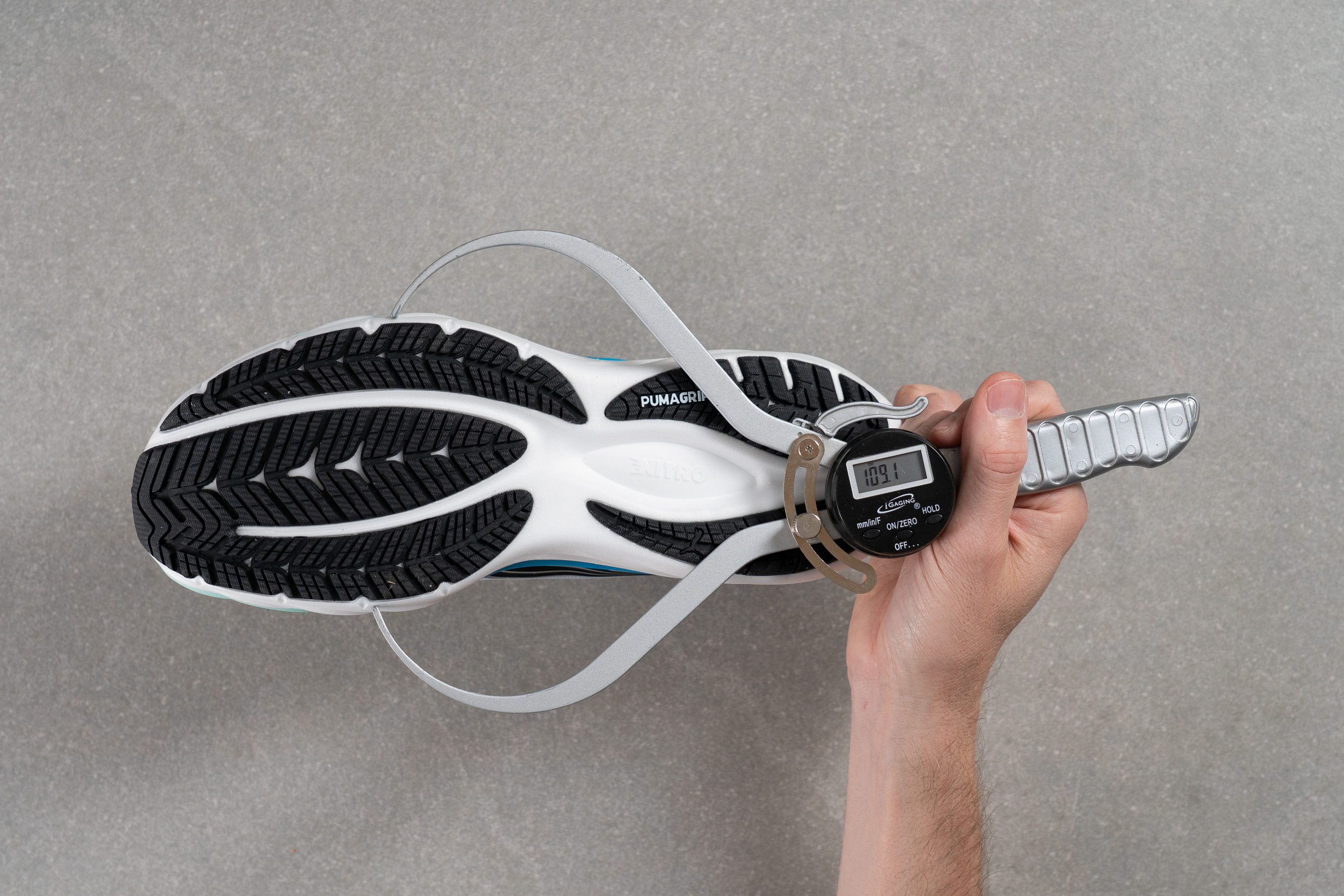
| Velocity Nitro 4 | 109.1 mm |
| Average | 114.4 mm |
Midsole width - heel
The heel is slightly broader, aligning closely with its main competitors. We measured it at 89.5 mm, which is nearly identical to the lab’s current average.
Here, PUMA opted for a wider design (compared to the forefoot) to fully support neutral heel strikers.
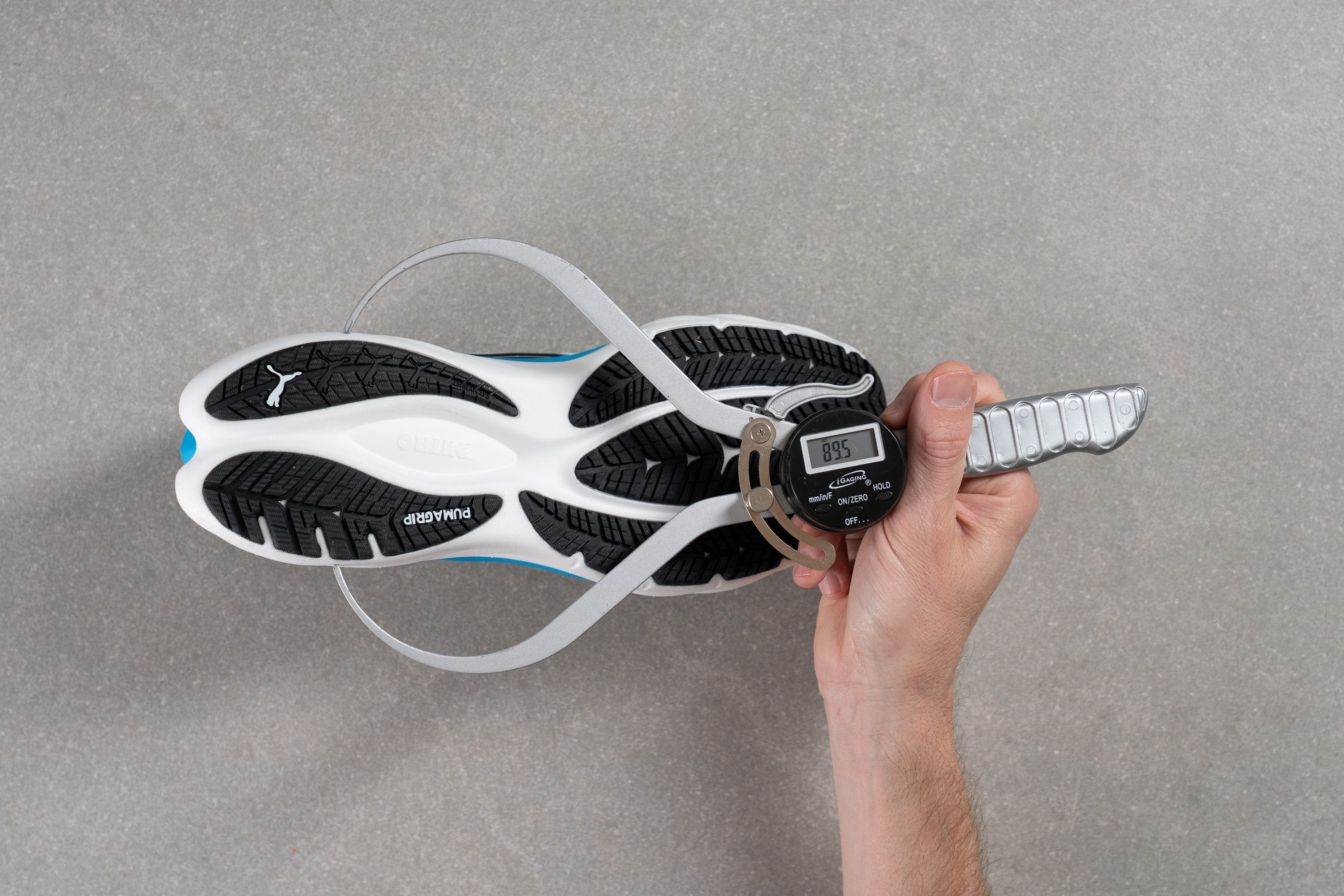
| Velocity Nitro 4 | 89.5 mm |
| Average | 90.7 mm |
Durability
Toebox durability
We tested the dual-layer engineered mesh upper and discovered that its durability performs well. It reached a 3/5 score in the Dremel test, a dependable result for managing average road wear.
| Velocity Nitro 4 | 3 |
| Average | 2.6 |
Heel padding durability
The heel counter scored another 3/5, though this time the result feels less impressive since most shoes perform better in this area. It’s not a major issue, but it’s an aspect PUMA could improve in the next version.
| Velocity Nitro 4 | 3 |
| Average | 3.4 |
Outsole durability
We tested the outsole and measured 1.1 mm of rubber wear with a tire tread gauge, a decent mark.
This was somewhat expected, as the soft PumaGrip formulation delivers powerful traction yet trades some durability in return.
| Velocity Nitro 4 | 1.1 mm |
| Average | 1.1 mm |
Outsole thickness
However, PUMA balanced this with a thick 3.9 mm layer of rubber, making any extra wear far less of a concern.
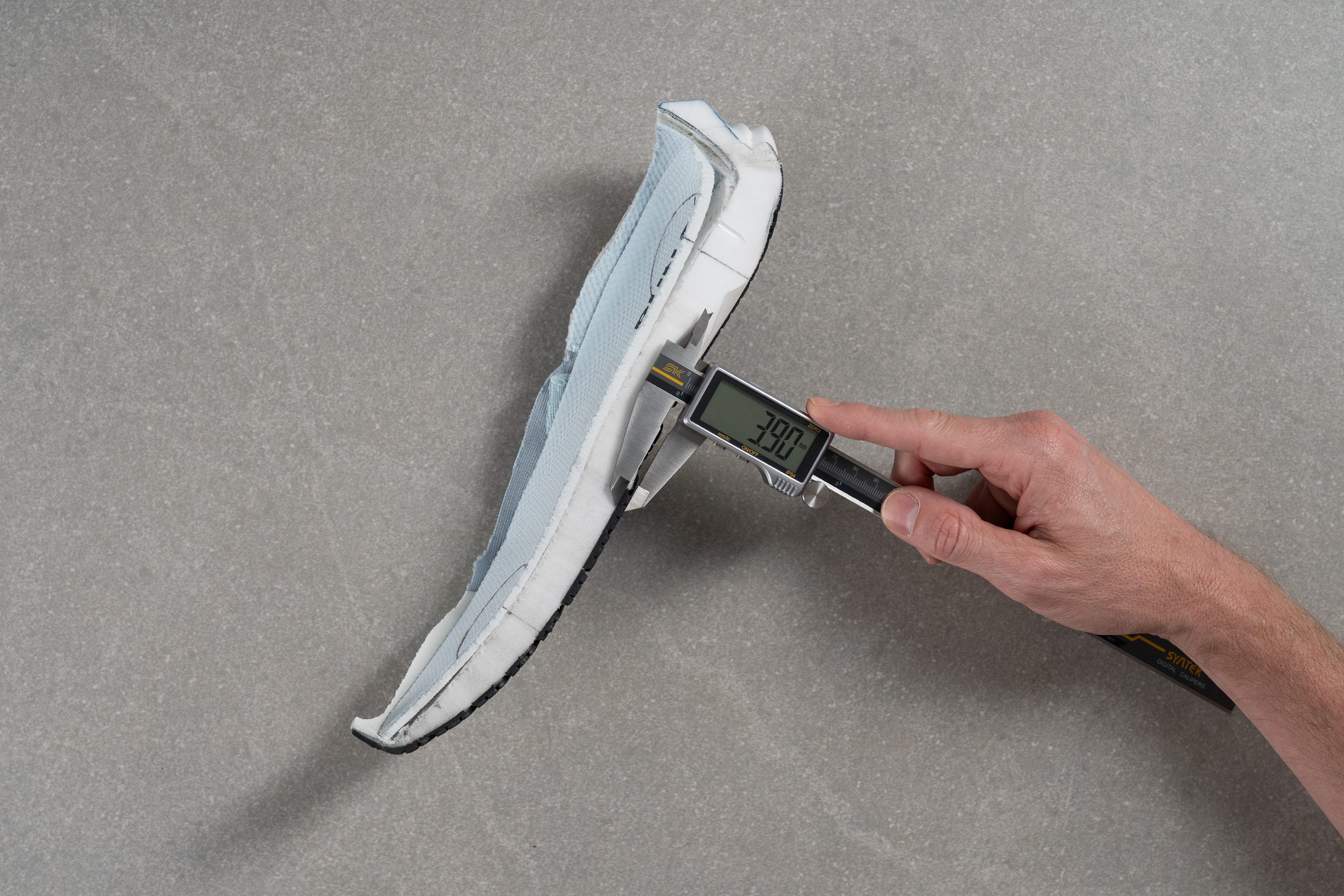
| Velocity Nitro 4 | 3.9 mm |
| Average | 3.2 mm |
Misc
Insole thickness
We discovered that the insole measures 5.2 mm in thickness, slightly more than what we usually record in the lab.
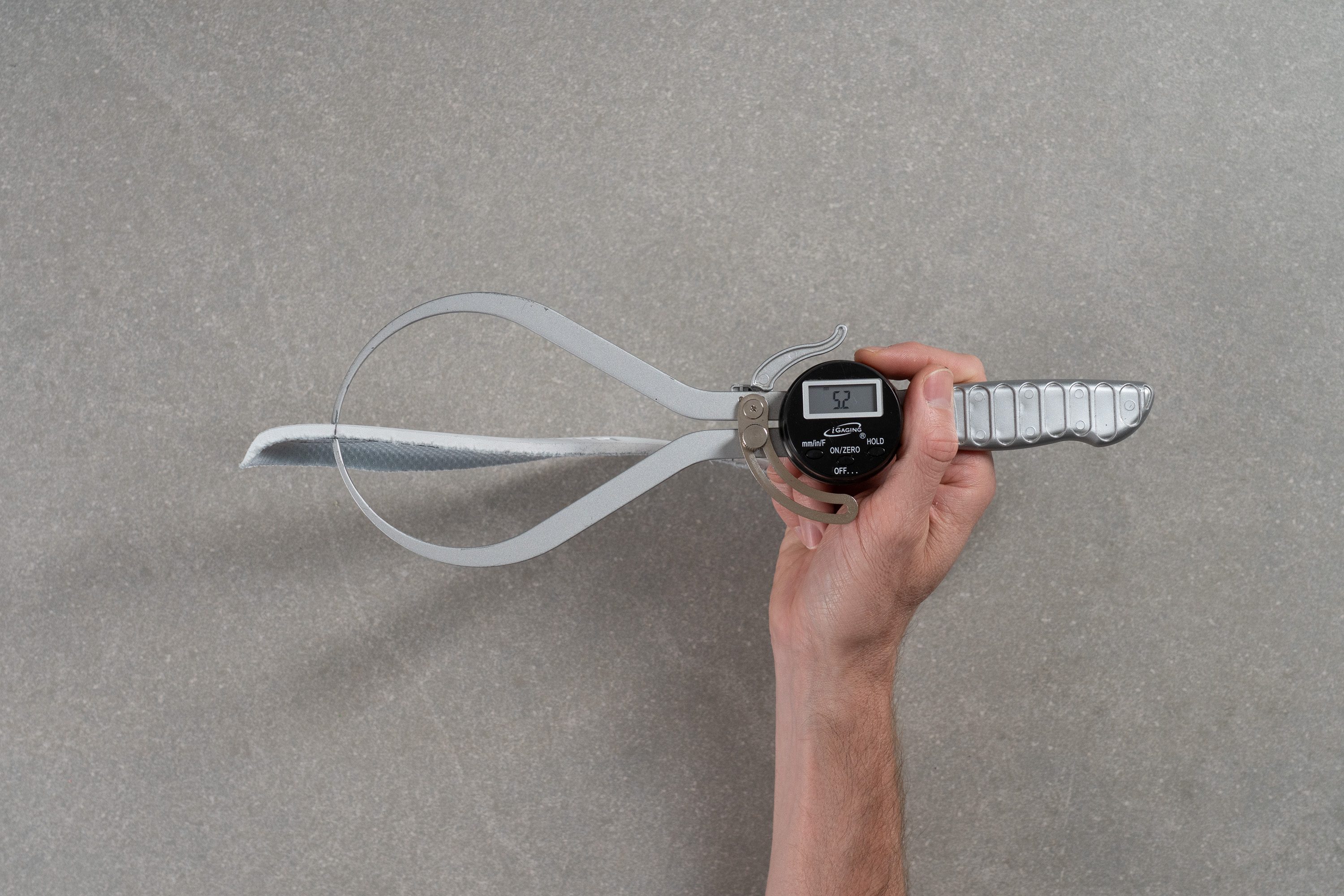
| Velocity Nitro 4 | 5.2 mm |
| Average | 4.5 mm |
Removable insole
However, if you want to remove the stock insole and replace it with a thinner one, you can easily do that as we proved here, which may help if you need a few extra millimeters in the toebox.
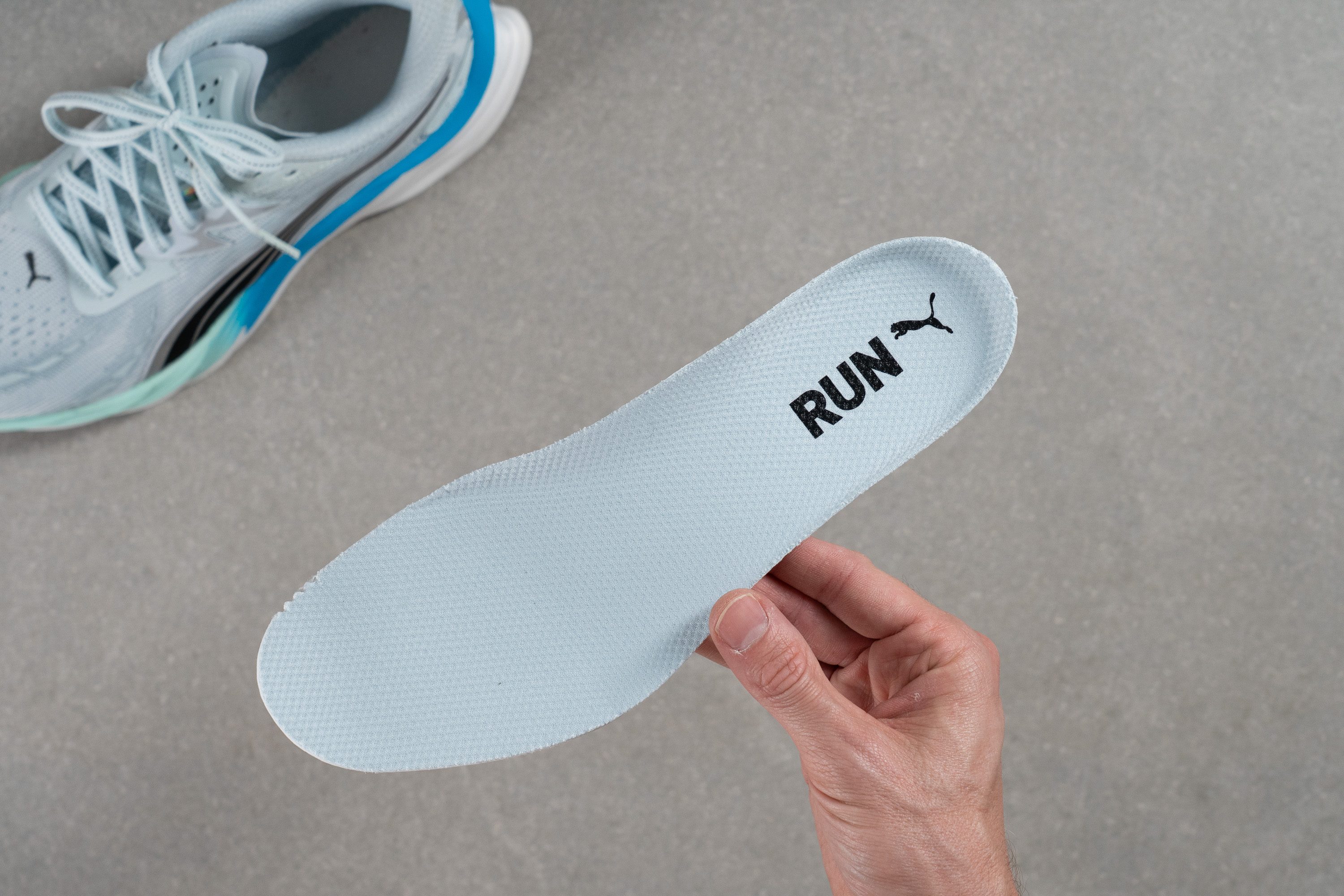
| Velocity Nitro 4 | Yes |
Midsole softness in cold (%)
The nitrogen-infused foam impressed us with its strong energy return, but in our simulated cold weather test it didn’t perform as well, becoming 41% firmer after 20 minutes at freezing temperatures.
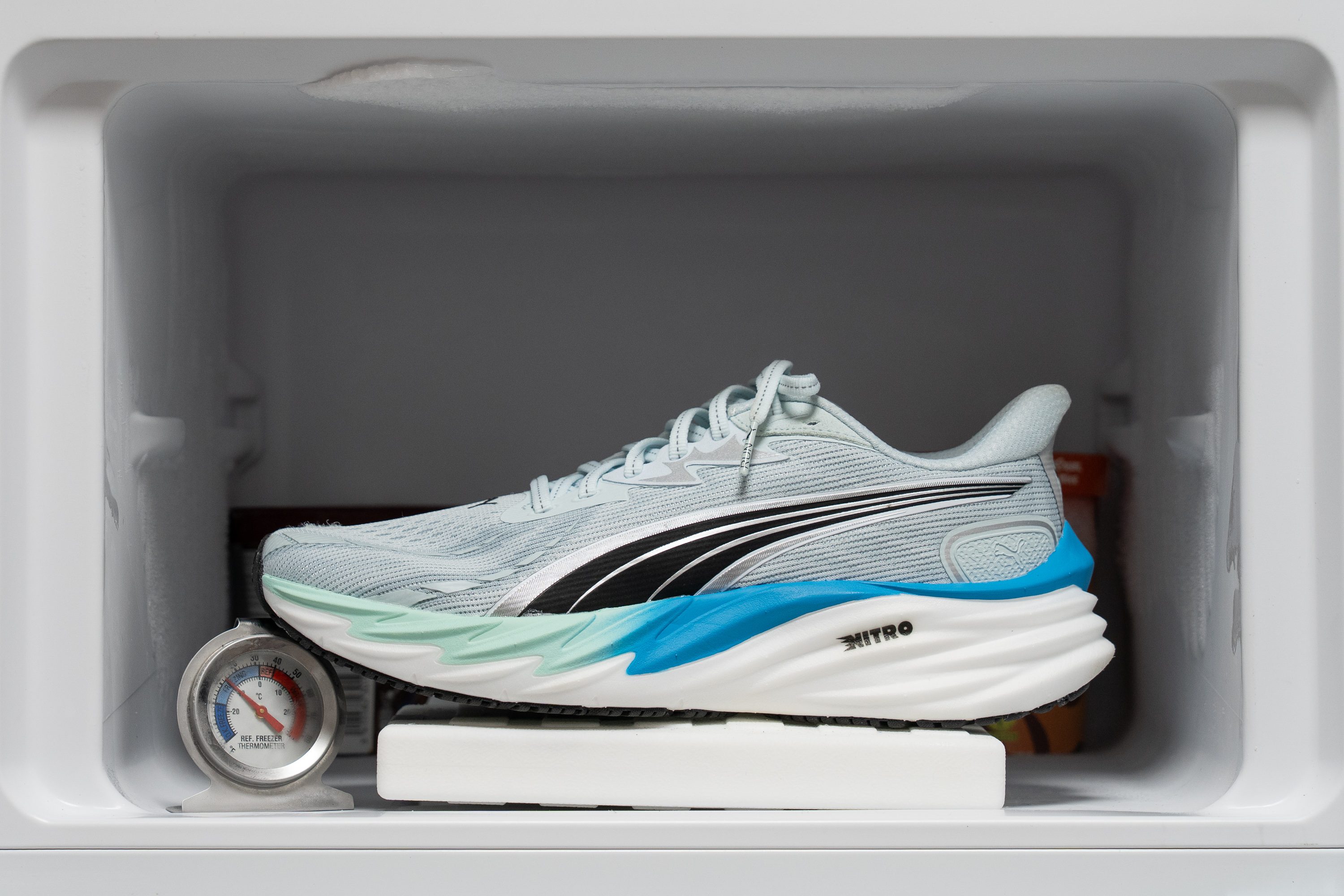
| Velocity Nitro 4 | 41% |
| Average | 24% |
Reflective elements
It’s always good to see reflective elements in a daily trainer, as they add safety for night running. The Velocity Nitro 4 includes hi-vis laces and a super-cool reflective piece on the heel.
| Velocity Nitro 4 | Yes |
Tongue padding
The Velocity Nitro 4 is clearly positioned to compete with the Pegasus series, which requires a shoe that works reliably and doesn’t fall apart quickly. That’s why PUMA went with a standard lacing system using punched eyelets reinforced in key spots.
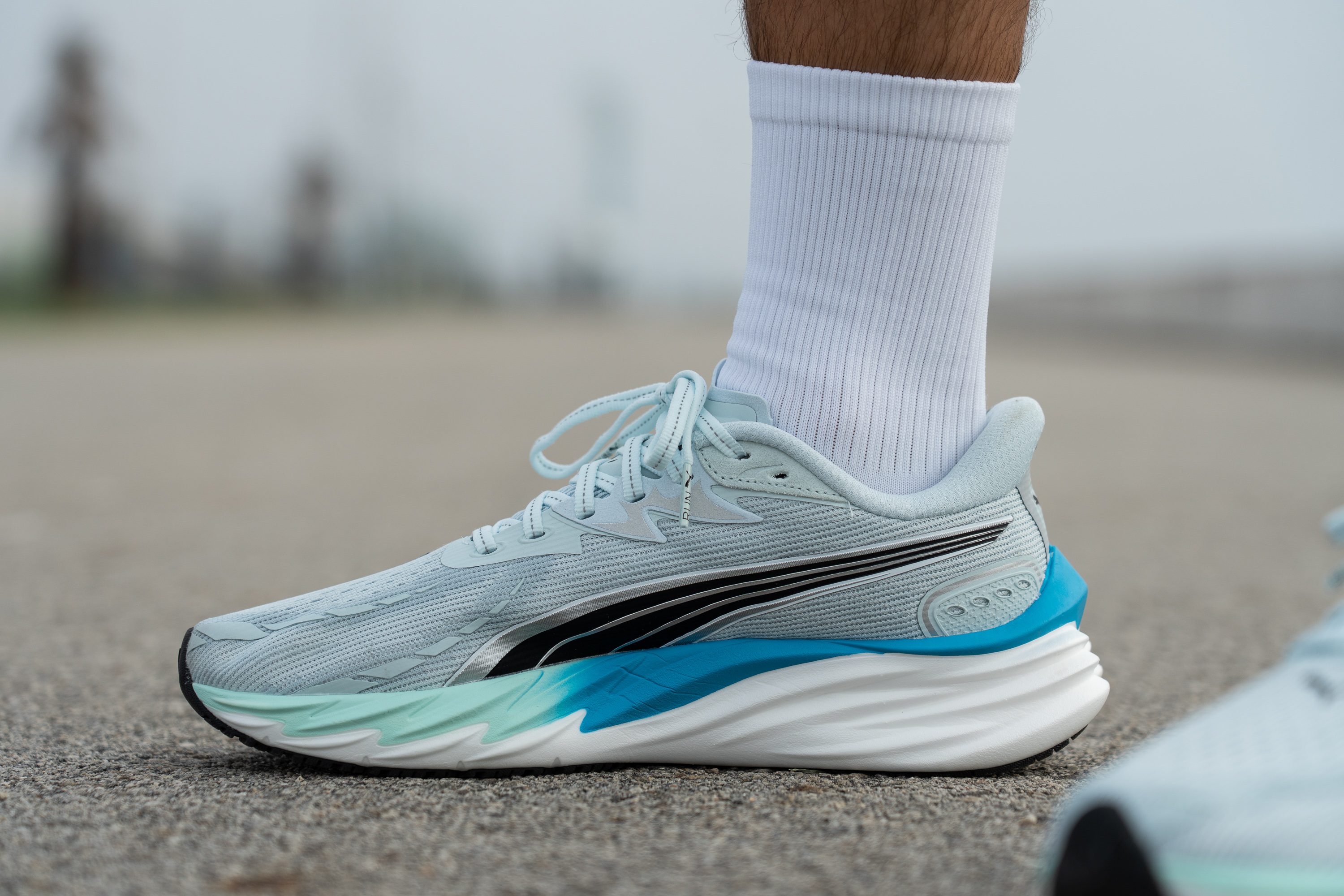
We also tested the tongue and discovered it measures just 4.1 mm in thickness. This slim design fits perfectly with the lightweight nature of the shoe—it provides enough comfort while highlighting that this model avoids being overly cushioned or bulky.
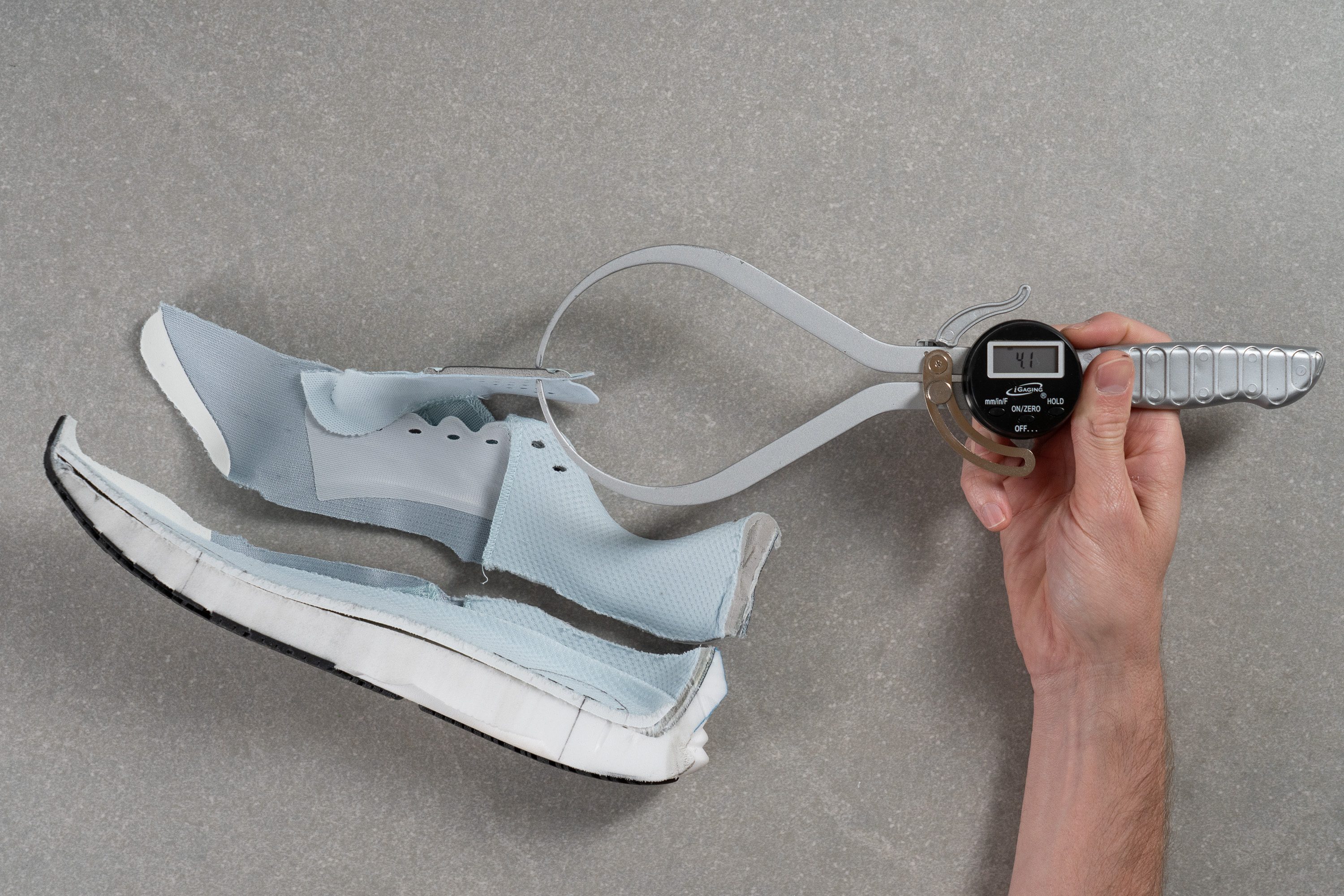
| Velocity Nitro 4 | 4.1 mm |
| Average | 5.8 mm |
Tongue: gusset type
When it comes to weight savings, PUMA clearly showed real intention with this shoe.
The semi-gusseted tongue uses very small pieces on both sides, trimming down the design and saving a little weight on each.
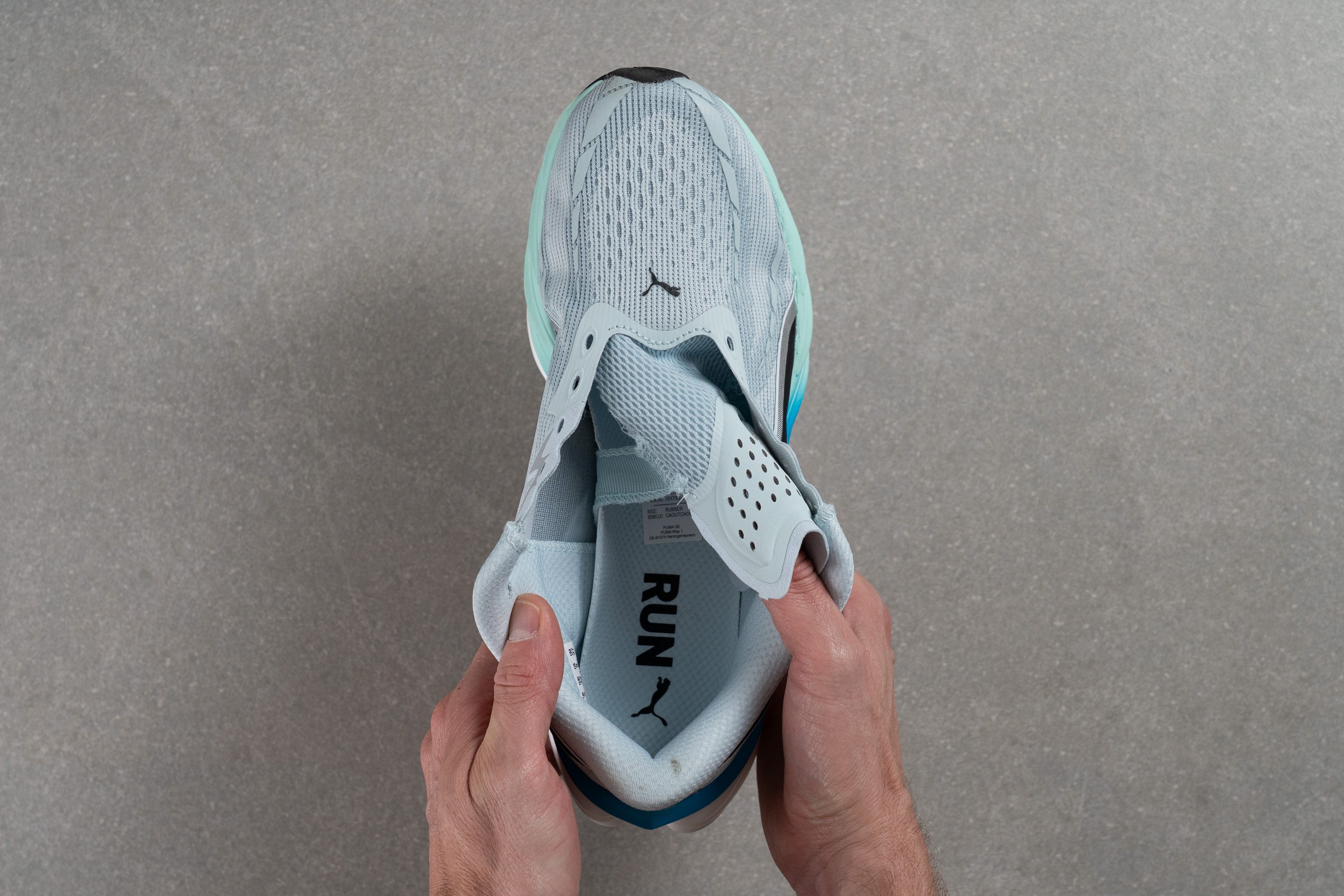
| Velocity Nitro 4 | Both sides (semi) |
Price
First, the bad news: version 4 comes with a slight price increase over its predecessor.
That said, we can confidently say this shoe is still very fairly priced considering its fun ride, energetic midsole, and excellent grip. In fact, few shoes offer a better energy return per dollar ratio...
| Velocity Nitro 4 | $140 |
| Average | $152 |
Heel tab
This heel tab follows a design trend often seen in Hoka shoes, where the back of the collar is slightly extended and curved outward.
The idea is simple: it makes the shoe easier to pull on without stressing the heel counter, while also reducing pressure and friction on the Achilles tendon. And it skips adding a finger-loop tab, serving as another smart weight-saving design choice.
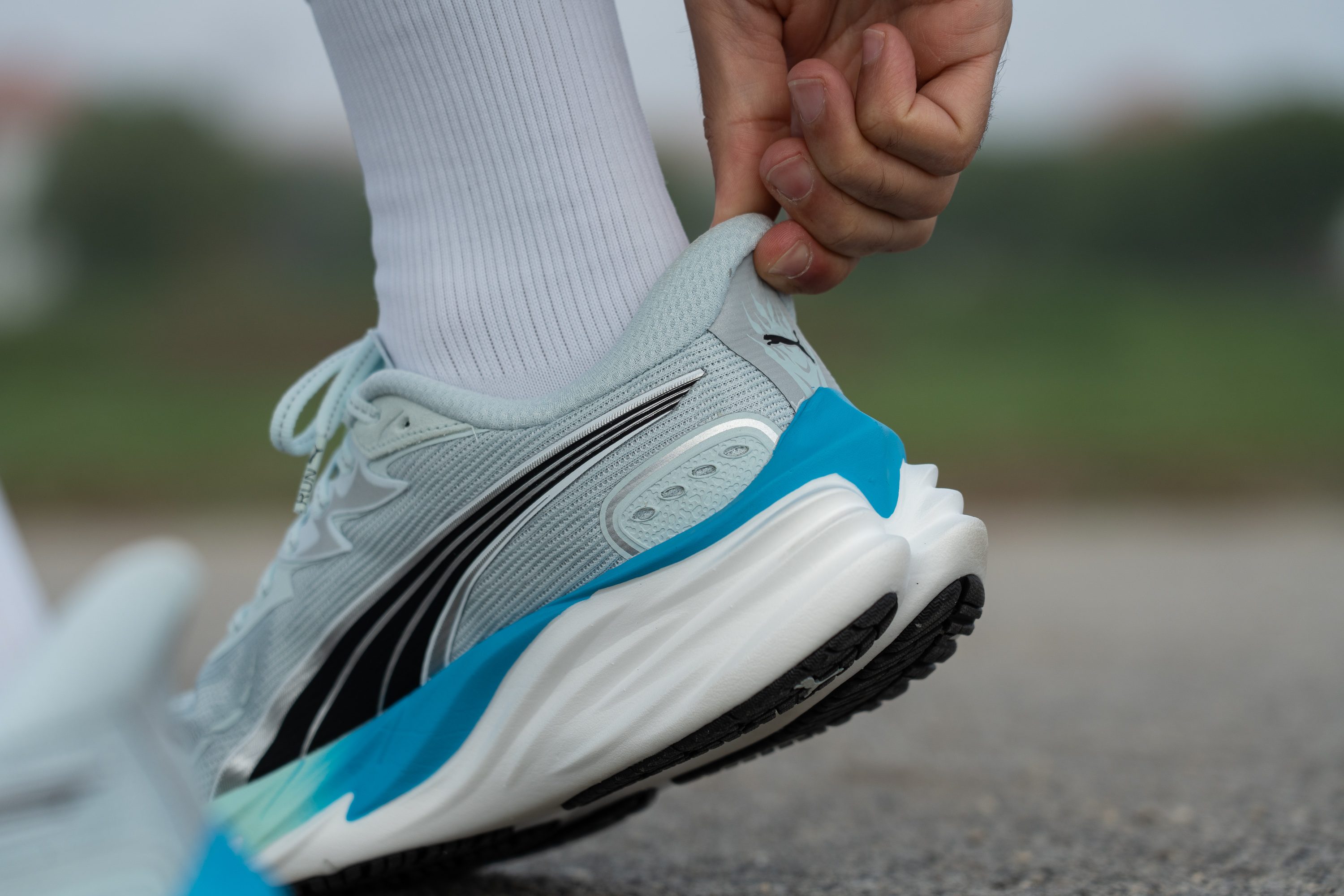
| Velocity Nitro 4 | Extended heel collar |

